Inbox and Environment News: Issue 504
August 1 - 7, 2021: Issue 504
Friends Of Narrabeen Lagoon Catchment August Newsletter, Forum & 2021 AGM
.jpg?timestamp=1627676810014)
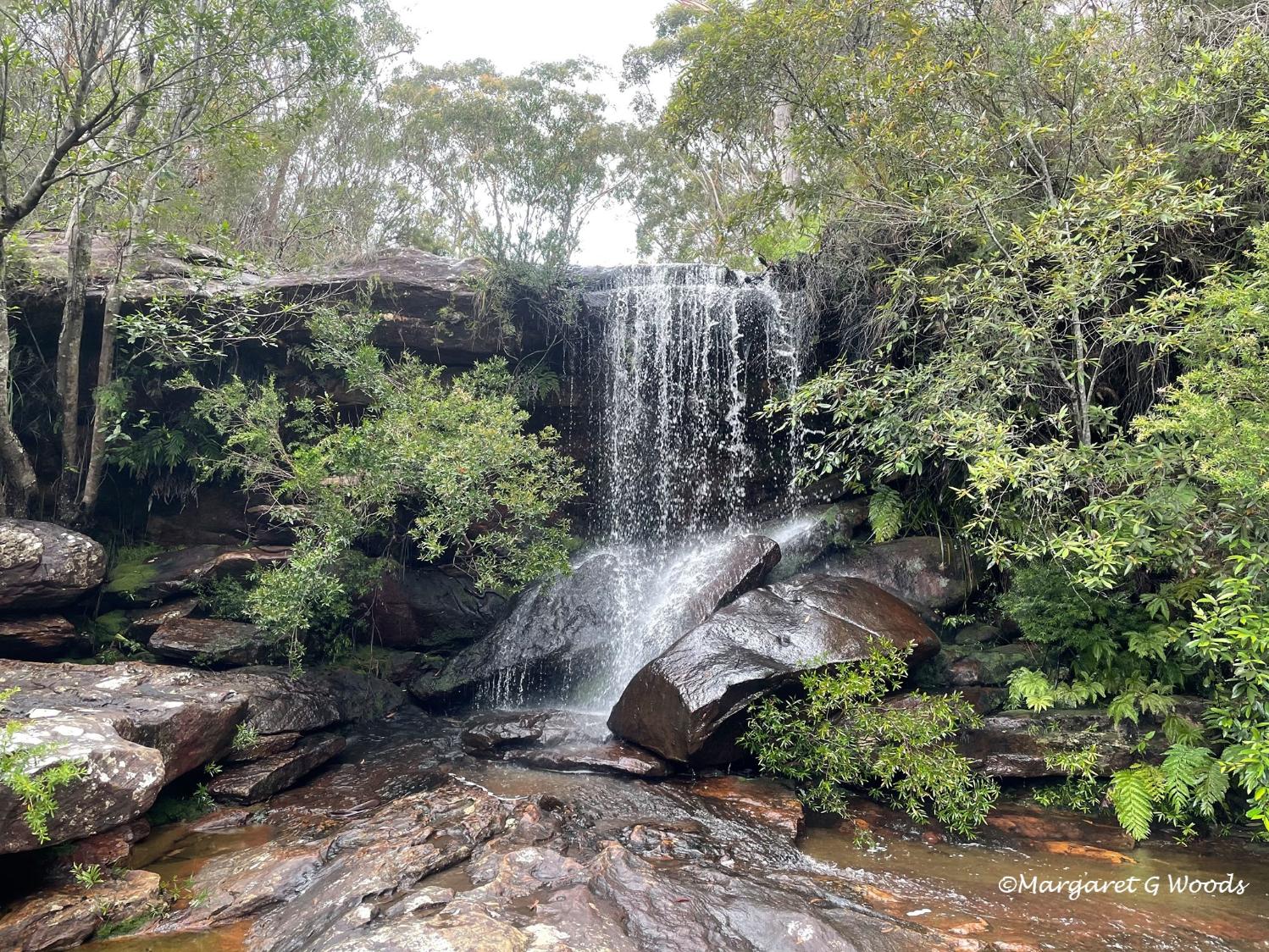
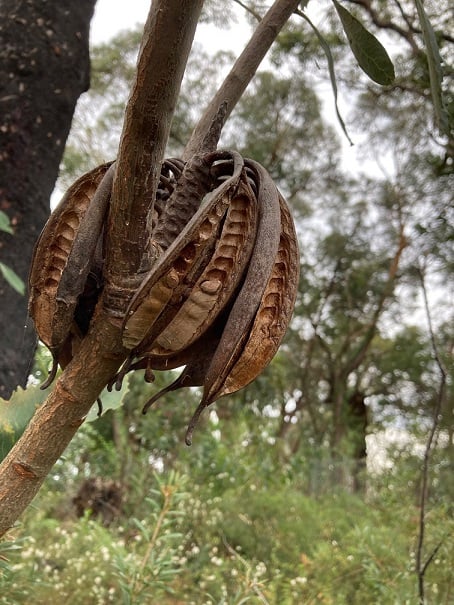 Pittwater Natural Heritage Association (PNHA) Newsletter No: 88
Pittwater Natural Heritage Association (PNHA) Newsletter No: 88
Discussion Paper To Encourage Views On Proposed Planning Controls
- improved controls for development near waterways, foreshores, wetlands and riparian lands;
- more water sensitive urban design and greater tree canopy;
- performance standards for net-zero carbon emission buildings;
- reducing areas for permitted dual occupancy, boarding houses and seniors’ housing to reduce inappropriate development in sensitive locations;
- provisions to restrict large scale retail in small retail centres.
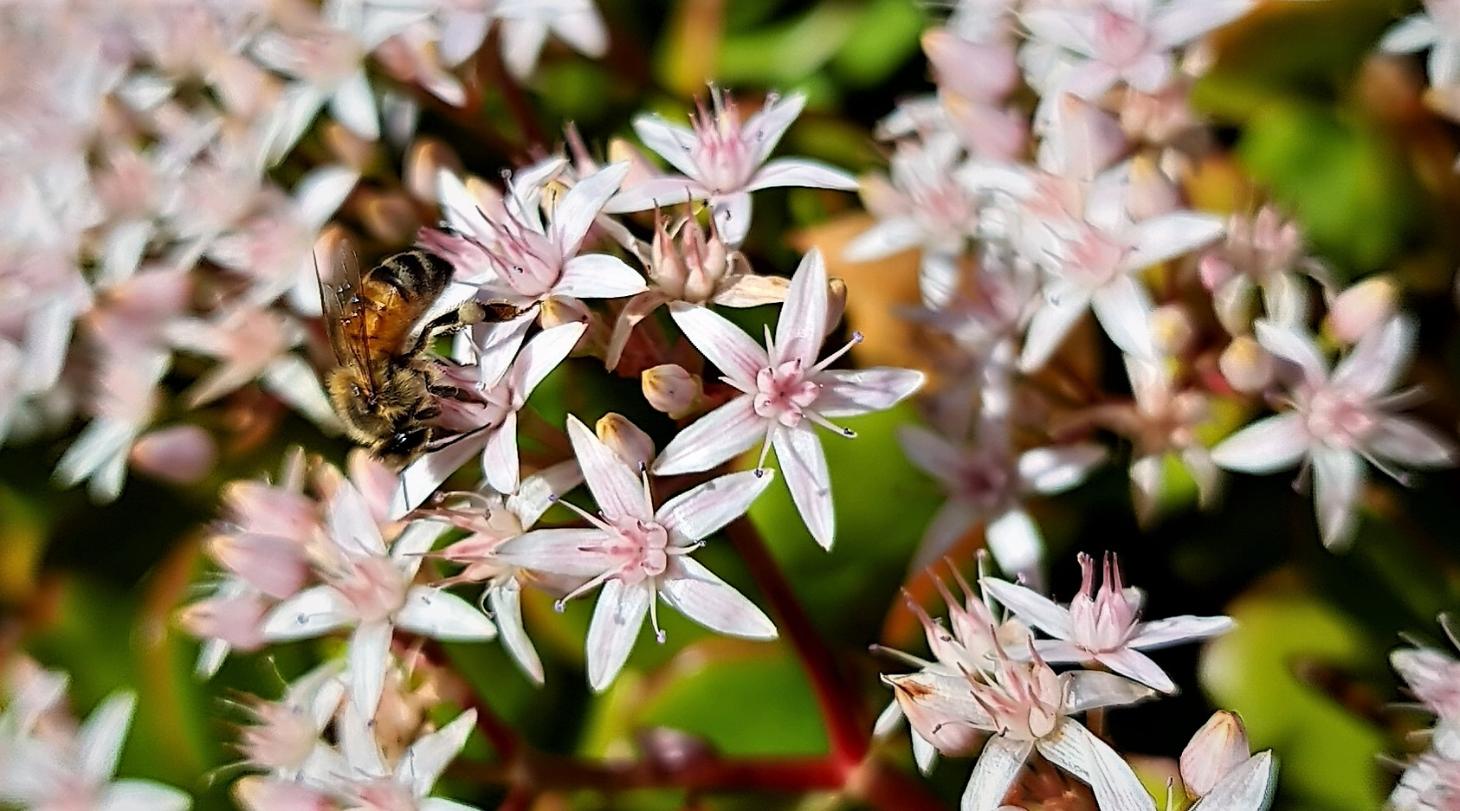
Echidna Breeding Season Commences
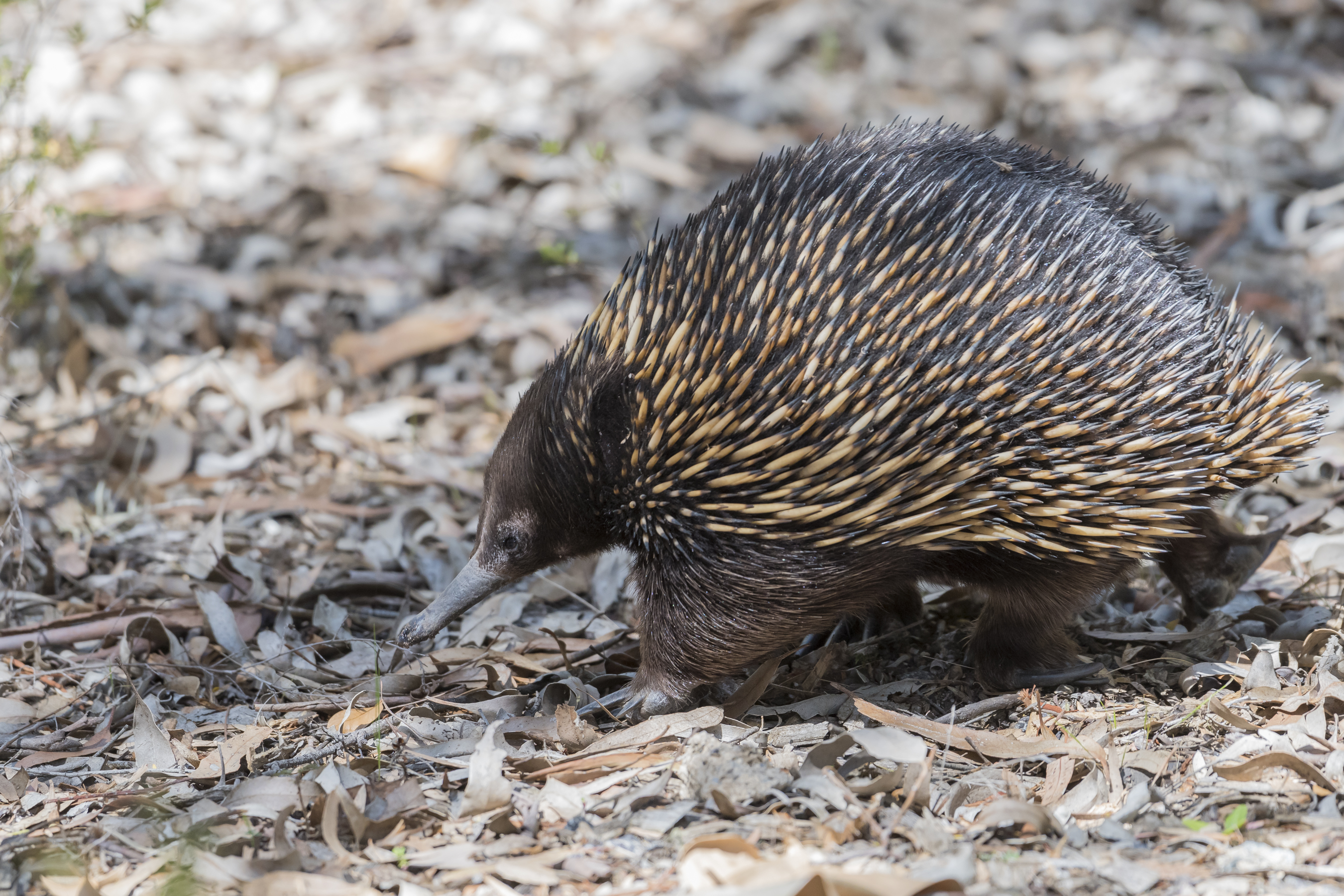
Reinstate The Marine Reserve From Rock Pool “Kiddies Corner” South Palm Beach: Petition
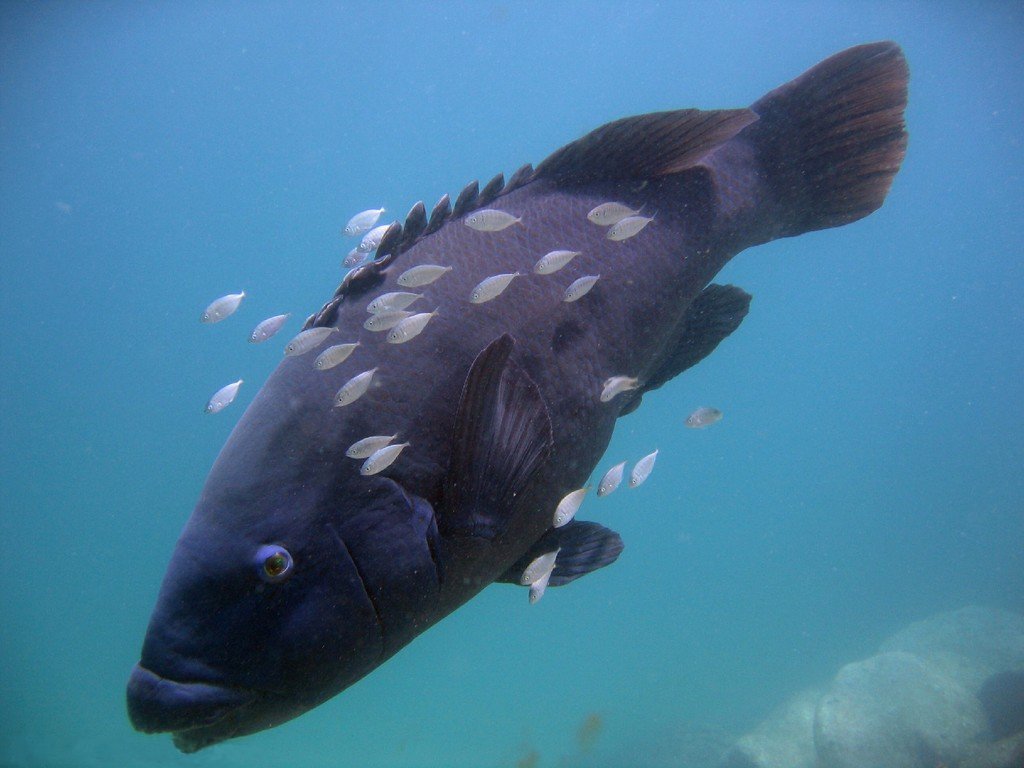
Repeat Offender Banned From Fishing For 5 Years
Fisheries Officers Crack Down On Illegal Fishing During Lockdown
New Expert Analysis Reveals NSW IPC Has “Comprehensively Failed” To Mitigate Greenhouse Emissions
“Even if it were considered acceptable to overlook the huge contribution to climate change of Scope 3 emissions from these projects, the Scope 1 and 2 emissions add up to 89 million tonnes of carbon dioxide equivalent; that is nearly 20 per cent of Australia’s total national emissions last year. Reducing or, ideally, eliminating those emissions would be a significant contribution to our obligation to help slow climate change."
NSW Government Introduces New Mining Rehabilitation Rules
- prepare a management plan to identify and achieve rehabilitation outcomes
- carry out rehabilitation risk assessments
- develop a program to demonstrate an approach to progressive rehabilitation
- make information about rehabilitation publicly available
- report annually on rehabilitation performance.
Reckless Plans For Kosciuszko National Park Must Be Stopped
- Increasing overnight accommodation in the park from 10,000 to 14,000 beds.
- Allowing helicopters flights into the ski fields.
- Expanding carparks and building new ones.
- Allowing vehicles onto iconic walking tracks.
- Artificially heating the waters at Yarrangobilly thermal pools.
Drone Technology Keeping A Watchful Eye On Whales This Migration Season
- The Right Whale ID citizen science project will recruit skilled drone operators to take specific images of southern right whales (SRW) in NSW waters, to increase knowledge and understanding about this endangered species.
- This project will be run as a pilot in 2021.
- It will be managed by NSW National Parks and Wildlife Service.
- The Right Whale ID program is funded under the Marine Estate Management Strategy (MEMS).
- Images will become available in the coming months at Threatened and protected species
- This year the project aims to train 20 volunteer drone operators along the NSW coast.
- These drone operators are members of the public, usually enthusiastic amateurs, some of whom have taken drone vision for NPWS in the past.
- All drone operators involved in this project are CASA registered and accredited.
- All operators must undertake training with NPWS Marine Wildlife Officers before joining the volunteer program to ensure they comply with Biodiversity Conservation Regulations (2017).
- The South-eastern Australian population of SRW is estimated to be less than 300 individuals, with less than 30 mothers expected to give birth in either Victoria or NSW waters this year.
- Unlike humpback whales, the endangered SRW uses coastal bays and beaches to breed, give birth, mother and rest before heading back to Antarctic waters to feed.
- This closeness to the shore can make them more vulnerable to disturbance from on-lookers on or in the water.
- The project will record details about individual SRWs, now endangered in NSW waters.
- Understanding the patterns of habitual use at different locations along the NSW coast will lead to better management and planning for their benefit.
- If you see a stranded, entangled, or sick whale, or a sighting of a southern right whale please report it immediately to NPWS on 13000 PARKS or ORRCA Whale and Dolphin Rescue on (02) 9415 3333 (24 hours hotline).
Dead, shrivelled frogs are unexpectedly turning up across eastern Australia. We need your help to find out why
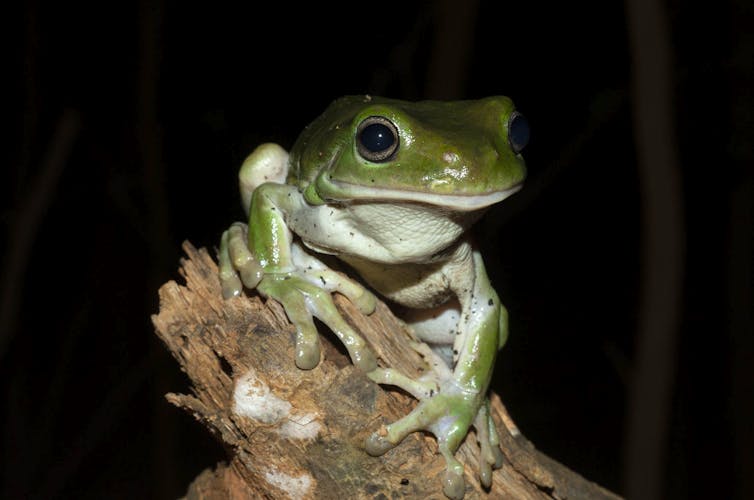
Over the past few weeks, we’ve received a flurry of emails from concerned people who’ve seen sick and dead frogs across eastern Victoria, New South Wales and Queensland.
One person wrote:
About a month ago, I noticed the Green Tree Frogs living around our home showing signs of lethargy & ill health. I was devastated to find about 7 of them dead.
Another wrote:
We previously had a very healthy population of green tree frogs and a couple of months ago I noticed a frog that had turned brown. I then noticed more of them and have found numerous dead frogs around our property.
And another said she’d seen so many dead frogs on her daily runs she had to “seriously wonder how many more are there”.
So what’s going on? The short answer is: we don’t really know. How many frogs have died and why is a mystery, and we’re relying on people across Australia to help us solve it.
Why Are Frogs Important?
Frogs are an integral part of healthy Australian ecosystems. While they are usually small and unseen, they’re an important thread in the food web, and a kind of environmental glue that keeps ecosystems functioning. Healthy frog populations are usually a good indication of a healthy environment.
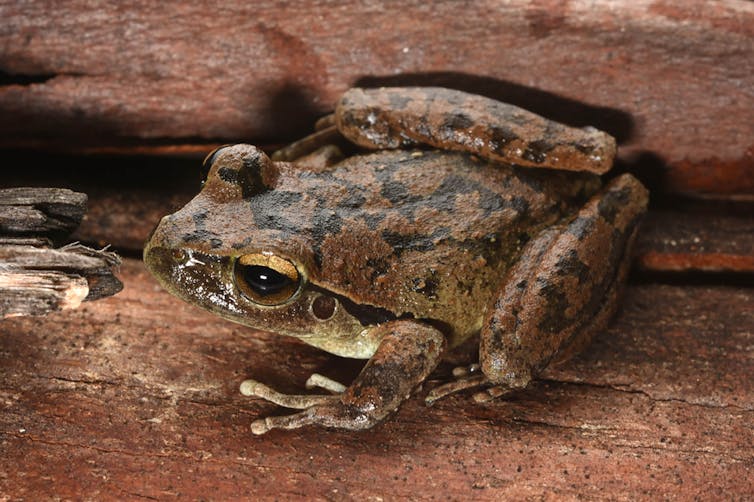
They eat vast amounts of invertebrates, including pest species, and they’re a fundamental food source for a wide variety of other wildlife, including birds, mammals and reptiles. Tadpoles fill our creeks and dams, helping keep algae and mosquito larvae under control while they too become food for fish and other wildlife.
But many of Australia’s frog populations are imperilled from multiple, compounding threats, such as habitat loss and modification, climate change, invasive plants, animals and diseases.
Although we’re fortunate to have at least 242 native frog species in Australia, 35 are considered threatened with extinction. At least four are considered extinct: the southern and northern gastric-brooding frogs (Rheobatrachus silus and Rheobatrachus vitellinus), the sharp-snouted day frog (Taudactylus acutirostris) and the southern day frog (Taudactylus diurnus).
A Truly Unusual Outbreak
In most circumstances, it’s rare to see a dead frog. Most frogs are secretive in nature and, when they die, they decompose rapidly. So the growing reports of dead and dying frogs from across eastern Australia over the last few months are surprising, to say the least.
While the first cold snap of each year can be accompanied by a few localised frog deaths, this outbreak has affected more animals over a greater range than previously encountered.
This is truly an unusual amphibian mass mortality event.
In this outbreak, frogs appear to be either darker or lighter than normal, slow, out in the daytime (they’re usually nocturnal), and are thin. Some frogs have red bellies, red feet, and excessive sloughed skin.
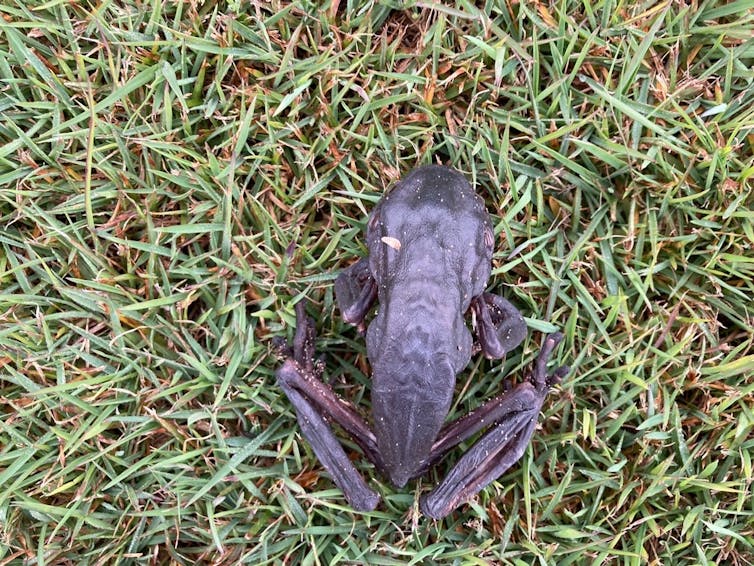
The iconic green tree frog (Litoria caeulea) seems hardest hit in this event, with the often apple-green and plump frogs turning brown and shrivelled.
This frog is widespread and generally rather common. In fact, it’s the ninth most commonly recorded frog in the national citizen science project, FrogID. But it has disappeared from parts of its former range.
Other species reported as being among the sick and dying include Peron’s tree frog (Litoria peronii), the Stony Creek frog (Litoria lesueuri), and green stream frog (Litoria phyllochroa). These are all relatively common and widespread species, which is likely why they have been found in and around our gardens.
We simply don’t know the true impacts of this event on Australia’s frog species, particularly those that are rare, cryptic or living in remote places. Well over 100 species of frog live within the geographic range of this outbreak. Dozens of these are considered threatened, including the booroolong Frog (Litoria booroolongensis) and the giant barred frog (Mixophyes iteratus).
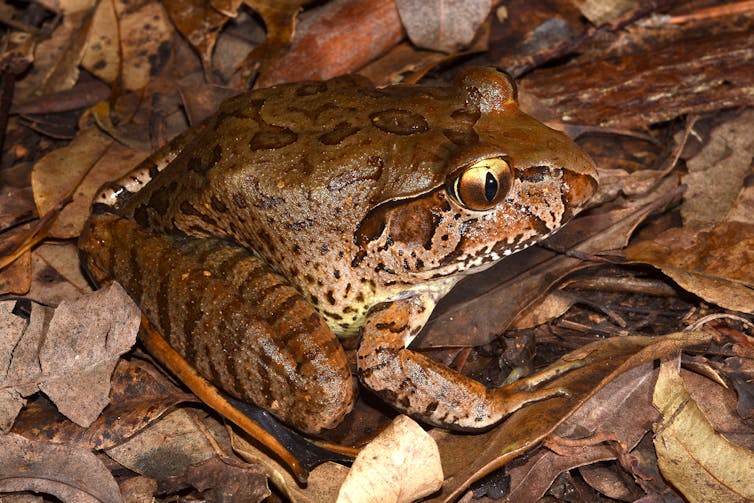
So What Might Be Going On?
Amphibians are susceptible to environmental toxins and a wide range of parasitic, bacterial, viral and fungal pathogens. Frogs globally have been battling it out with a pandemic of their own for decades — a potentially deadly fungus often called amphibian chytrid fungus.
This fungus attacks the skin, which frogs use to breathe, drink, and control electrolytes important for the heart to function. It’s also responsible for causing population declines in more than 500 amphibian species around the world, and 50 extinctions.
For example, in Australia the bright yellow and black southern corroboree frog (Pseudophryne corroboree) is just hanging on in the wild, thanks only to intensive management and captive breeding.
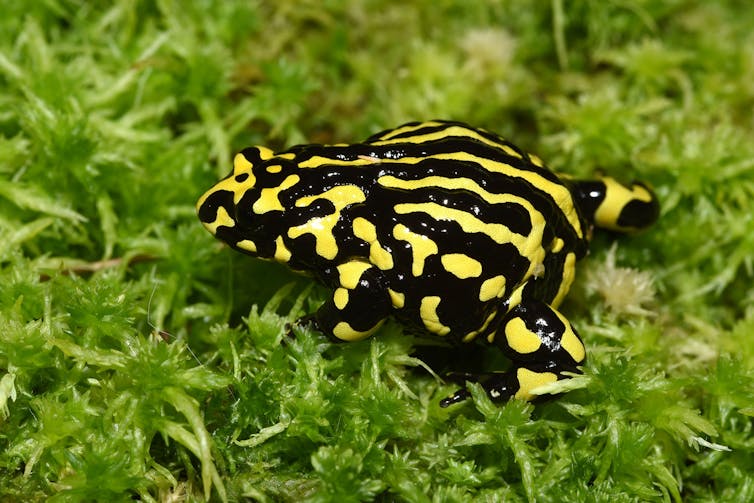
Curiously, some other frog species appear more tolerant to the amphibian chytrid fungus than others. Many now common frogs seem able to live with the fungus, such as the near-ubiquitous Australian common eastern froglet (Crinia signifera).
But if frogs have had this fungus affecting them for decades, why are we seeing so many dead frogs now?
Read more: A deadly fungus threatens to wipe out 100 frog species – here's how it can be stopped
Well, disease is the outcome of a battle between a pathogen (in this case a fungus), a host (in this case the frog) and the environment. The fungus doesn’t do well in warm, dry conditions. So during summer, frogs are more likely to have the upper hand.
In winter, the tables turn. As the frog’s immune system slows, the fungus may be able to take hold.
Of course, the amphibian chytrid fungus is just one possible culprit. Other less well-known diseases affect frogs.

To date, the Australian Registry of Wildlife Health has confirmed the presence of the amphibian chytrid fungus in a very small number of sick frogs they’ve examined from the recent outbreak. However, other diseases — such as ranavirus, myxosporean parasites and trypanosome parasites — have also been responsible for native frog mass mortality events in Australia.
It’s also possible a novel or exotic pathogen could be behind this. So the Australian Registry of Wildlife Health is working with the Australian Museum, government biosecurity and environment agencies as part of the investigation.
Here’s How You Can Help
While we suspect a combination of the amphibian chytrid fungus and the chilly temperatures, we simply don’t know what factors may be contributing to the outbreak.
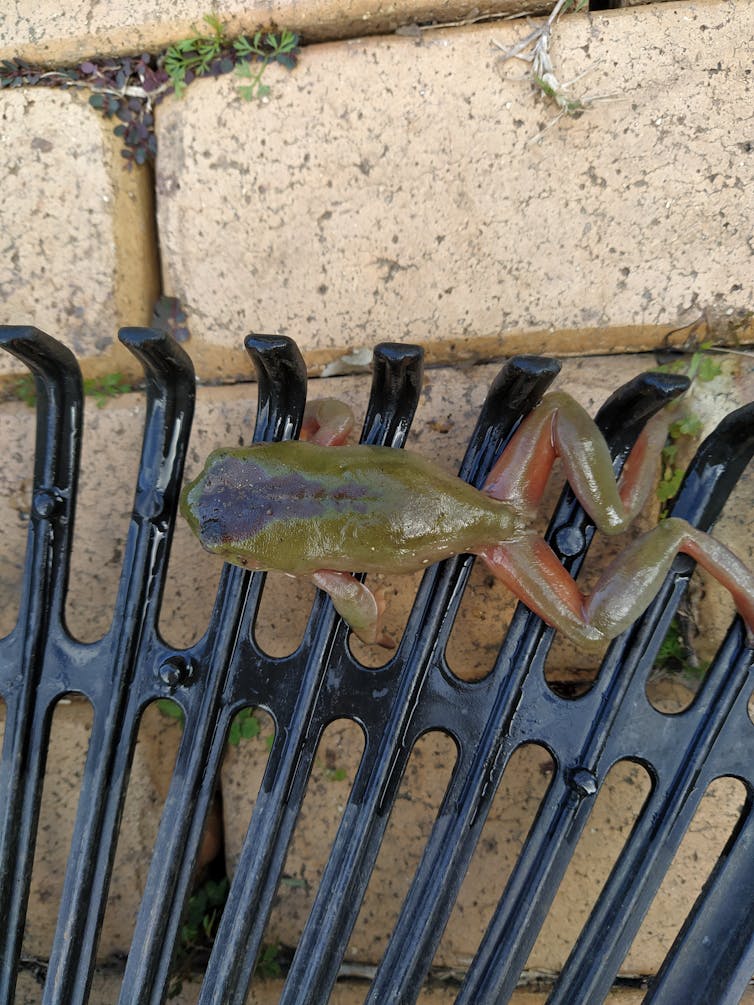
We also aren’t sure how widespread it is, what impact it will have on our frog populations, or how long it will last.
While the temperatures stay low, we suspect our frogs will continue to succumb. If we don’t investigate quickly, we will lose the opportunity to achieve a diagnosis and understand what has transpired.
We need your help to solve this mystery.
Please send any reports of sick or dead frogs (and if possible, photos) to us, via the national citizen science project FrogID, or email calls@frogid.net.au.
Read more: Clicks, bonks and dripping taps: listen to the calls of 6 frogs out and about this summer ![]()
Jodi Rowley, Curator, Amphibian & Reptile Conservation Biology, UNSW, Australian Museum and Karrie Rose, Australian Registry of Wildlife Health - Taronga Conservation Society Australia, University of Sydney
This article is republished from The Conversation under a Creative Commons license. Read the original article.
You may have heard the ‘moon wobble’ will intensify coastal floods. Well, here’s what that means for Australia
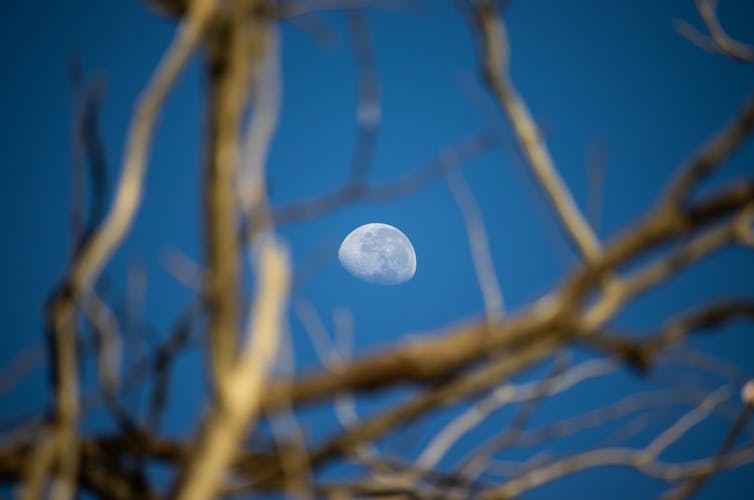
Extreme floods this month have been crippling cities worldwide. This week in China’s Henan province, a year’s worth of rain fell in just three days. Last week, catastrophic floods swept across western Germany and parts of Belgium. And at home, rain fell in Perth for 17 days straight, making it the city’s wettest July in 20 years.
But torrential rain isn’t the only cause of floods. Many coastal towns and cities in Australia would already be familiar with what are known as “nuisance” floods, which occur during some high tides.
A recent study from NASA and the University of Hawaii suggests even nuisance floods are set to get worse in the mid-2030s as the moon’s orbit begins another phase, combined with rising sea levels from climate change.
The study was conducted in the US. But what do its findings mean for the vast lengths of coastlines in Australia and the people who live there?
A Triple Whammy
We know average sea levels are rising from climate change, and we know small rises in average sea levels amplify flooding during storms. From the perspective of coastal communities, it’s not if a major flood will occur, it’s when the next one will arrive, and the next one after that.
But we know from historical and paleontological records of flooding events that in many, if not most, cases the coastal flooding we’ve directly experienced in our lifetimes are simply the entrée in terms of what will occur in future.
Flooding is especially severe when a storm coincides with a high tide. And this is where NASA and the University of Hawaii’s new research identified a further threat.
Researchers looked at the amplification phase of the natural 18.6-year cycle of the “wobble” in the moon’s orbit, first identified in 1728.
The orbit of the moon around the sun is not quite on a flat plane (planar); the actual orbit oscillates up and down a bit. Think of a spinning plate on a stick — the plate spins, but also wobbles up and down.
Read more: Predators, prey and moonlight singing: how phases of the Moon affect native wildlife
When the moon is at particular parts of its wobbling orbit, it pulls on the water in the oceans a bit more. This means for some years during the 18.6-year cycle, some high tides are higher than they would have otherwise been.
This results in increases to daily tidal rises, and this, in turn, will exacerbate coastal flooding, whether it be nuisance flooding in vulnerable areas, or magnified flooding during a storm.
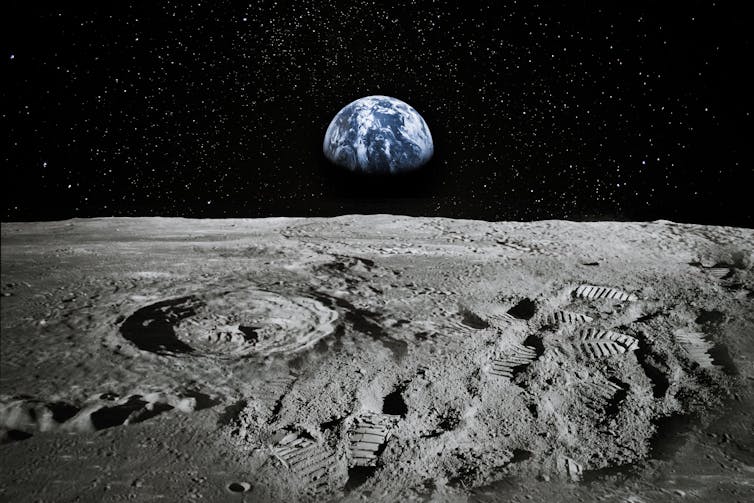
A major wobble amplification phase will occur in the mid-2030s, when climate change will make the problem become severe in some cases.
The triple whammy of the wobble in the moon’s orbit, ongoing upwards creep in sea levels from ocean warming, and more intense storms associated with climate change, will bring the impacts of sea-level rise earlier than previously expected — in many locations around the world. This includes in Australia.
So What Will Happen In Australia?
The locations in Australia where tides have the largest range, and will be most impacted by the wobble, aren’t close to the major population centres. Australia’s largest tides are close to Broad Sound, near Hay Point in central Queensland, and Derby in the Kimberley region of Western Australia.
However, many Australian cities host suburbs that routinely flood during larger high tides. Near my home in Meanjin (Brisbane), the ocean regularly backs up through the storm water drainage system during large high tides. At times, even getting from the front door to the street can be challenging.
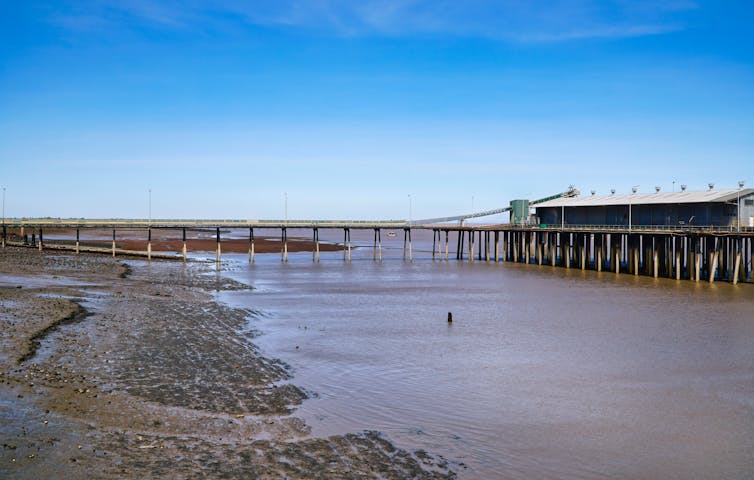
Some bayside suburbs in Melbourne are also already exposed to nuisance flooding. But a number of others that are not presently exposed may also become more vulnerable from the combined influence of the moon wobble and climate change — even when the weather is calm. High tide during this lunar phase, occurring during a major rainfall event, will result in even greater risk.
Read more: High-tide flood risk is accelerating, putting coastal economies at risk
In high-income nations like Australia, sea-level rise means increasing unaffordability of insurance for coastal homes, followed by an inability to seek insurance cover at all and, ultimately, reductions in asset values for those unable or unwilling to adapt.
The prognosis for lower-income coastal communities that aren’t able to adapt to sea-level rise is clear: increasingly frequent and intense flooding will make many aspects of daily life difficult to sustain. In particular, movement around the community will be challenging, homes will often be inundated, unhealthy and untenable, and the provision of basic services problematic.
What Do We Do About It?
While our hearts and minds continue to be occupied by the pandemic, threats from climate change to our ongoing standard of living, or even future viability on this planet, haven’t slowed. We can pretend to ignore what is happening and what is increasingly unstoppable, or we can proactively manage the increasing threat.

Thankfully, approaches to adapting the built and natural environment to sea-level rise are increasingly being applied around the world. Many major cities have already embarked on major coastal adaptation programs – think London, New York, Rotterdam, and our own Gold Coast.
However, the uptake continues to lag behind the threat. And one of the big challenges is to incentivise coastal adaptation without overly impacting private property rights.
Read more: For flood-prone cities, seawalls raise as many questions as they answer
Perhaps the best approach to learning to live with water is led by the Netherlands. Rather than relocating entire communities or constructing large barriers like sea walls, this nation is finding ways to reduce the overall impact of flooding. This includes more resilient building design or reducing urban development in specific flood retention basins. This means flooding can occur without damaging infrastructure.
There are lessons here. Australia’s adaptation discussions have often focused on finding the least worst choice between constructing large seawalls or moving entire communities — neither of which are often palatable. This leads to inaction, as both options aren’t often politically acceptable.
The seas are inexorably creeping higher and higher. Once thought to be a problem for our grandchildren, it is becoming increasingly evident this is a challenge for the here and now. The recently released research confirms this conclusion.
Read more: King tides and rising seas are predictable, and we're not doing enough about it ![]()
Mark Gibbs, Principal Engineer: Reef Restoration, Australian Institute of Marine Science
This article is republished from The Conversation under a Creative Commons license. Read the original article.
Climate change is causing tuna to migrate, which could spell catastrophe for the small islands that depend on them
Katherine Seto, University of Wollongong; Johann Bell, University of Wollongong; Quentin Hanich, University of Wollongong, and Simon Nicol, University of CanberraSmall Pacific Island states depend on their commercial fisheries for food supplies and economic health. But our new research shows climate change will dramatically alter tuna stocks in the tropical Pacific, with potentially severe consequences for the people who depend on them.
As climate change warms the waters of the Pacific, some tuna will be forced to migrate to the open ocean of the high seas, away from the jurisdiction of any country. The changes will affect three key tuna species: skipjack, yellowfin, and bigeye.
Pacific Island nations such as the Cook Islands and territories such as Tokelau charge foreign fishing operators to access their waters, and heavily depend on this revenue. Our research estimates the movement of tuna stocks will cause a fall in annual government revenue to some of these small island states of up to 17%.
This loss will hurt these developing economies, which need fisheries revenue to maintain essential services such as hospitals, roads and schools. The experience of Pacific Island states also bodes poorly for global climate justice more broadly.
Island States At Risk
Catches from the Western and Central Pacific represent over half of all tuna produced globally. Much of this catch is taken from the waters of ten small developing island states, which are disproportionately dependent on tuna stocks for food security and economic development.
These states comprise:
- Cook Islands
- Federated States of Micronesia
- Kiribati
- Marshall Islands
- Nauru
- Palau
- Papua New Guinea
- Solomon Islands
- Tokelau
- Tuvalu
Their governments charge tuna fishing access fees to distant nations of between US$7.1 million (A$9.7 million) and $134 million (A$182 million), providing an average of 37% of total government revenue (ranging from 4-84%).
Tuna stocks are critical for these states’ current and future economic development, and have been sustainably managed by a cooperative agreement for decades. However, our analysis reveals this revenue, and other important benefits fisheries provide, are at risk.
Read more: Warming oceans are changing Australia's fishing industry
Climate Change And Migration
Tuna species are highly migratory – they move over large distances according to ocean conditions. The skipjack, yellowfin and bigeye tuna species are found largely within Pacific Island waters.
Concentrations of these stocks normally shift from year to year between areas further to the west in El Niño years, and those further east in La Niña years. However, under climate change, these stocks are projected to shift eastward – out of sovereign waters and into the high seas.
Under climate change, the tropical waters of the Pacific Ocean will warm further. This warming will result in a large eastward shift in the location of the edge of the Western Pacific Warm Pool (a mass of water in the western Pacific Ocean with consistently high water temperatures) and subsequently the prime fishing grounds for some tropical tuna.
This shift into areas beyond national jurisdiction would result in weaker regulation and monitoring, with parallel implications for the long-term sustainability of stocks.
What Our Research Found
Combining climate science, ecological models and economic data from the region, our research published today in Nature Sustainability shows that under strong projections of climate change, small island economies are poised to lose up to US$140 million annually by 2050, and up to 17% of annual government revenue in the case of some states.
The Intergovernmental Panel on Climate Change (IPCC) provides scenarios of various greenhouse gas concentrations, called “representative concentration pathways” (RCP). We used a higher RCP of 8.5 and a more moderate RCP of 4.5 to understand tuna movement in different emissions scenarios.
Read more: Citizen scientist scuba divers shed light on the impact of warming oceans on marine life
In the RCP 8.5 scenario, by 2050, our model predicted the total biomass of the three species of tuna in the combined jurisdictions of the ten Pacific Island states would decrease by an average of 13%, and up to 20%.
But if emissions were kept to the lower RCP 4.5 scenario, the effects are expected to be far less pronounced, with an average decrease in biomass of just 1%.
While both climate scenarios result in average losses of both tuna catches and revenue, lower emissions scenarios lead to drastically smaller losses, highlighting the importance of climate action.
These projected losses compound the existing climate vulnerability of many Pacific Island people, who will endure some of the earliest and harshest climate realities, while being responsible for only a tiny fraction of global emissions.
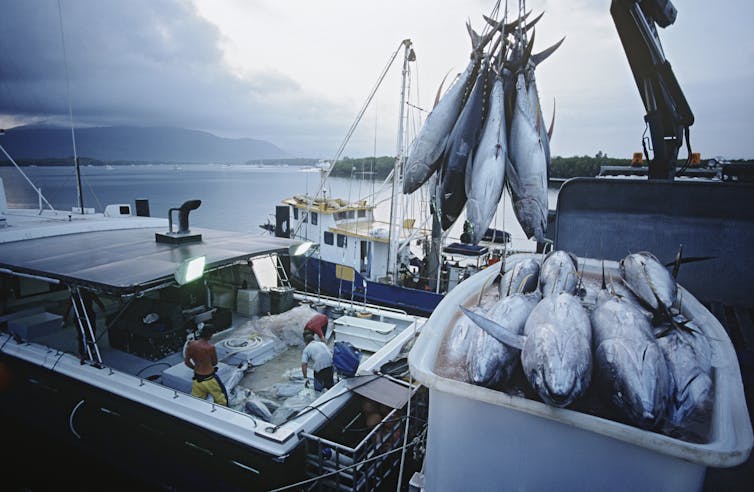
What Can Be Done?
Capping greenhouse gas emissions, and reducing them to levels aligning with the Paris Agreement, would reduce multiple climate impacts for these states, including shifting tuna stocks.
In many parts of the world, the consequences of climate change compound upon one another to create complex injustices. Our study identifies new direct and indirect implications of climate change for some of the world’s most vulnerable populations.
Read more: The 2016 Great Barrier Reef heatwave caused widespread changes to fish populations ![]()
Katherine Seto, Research Fellow, University of Wollongong; Johann Bell, Visiting Professorial Fellow, University of Wollongong; Quentin Hanich, Associate Professor, University of Wollongong, and Simon Nicol, Adjunct professor, University of Canberra
This article is republished from The Conversation under a Creative Commons license. Read the original article.
Artificial refuges are a popular stopgap for habitat destruction, but the science isn’t up to scratch
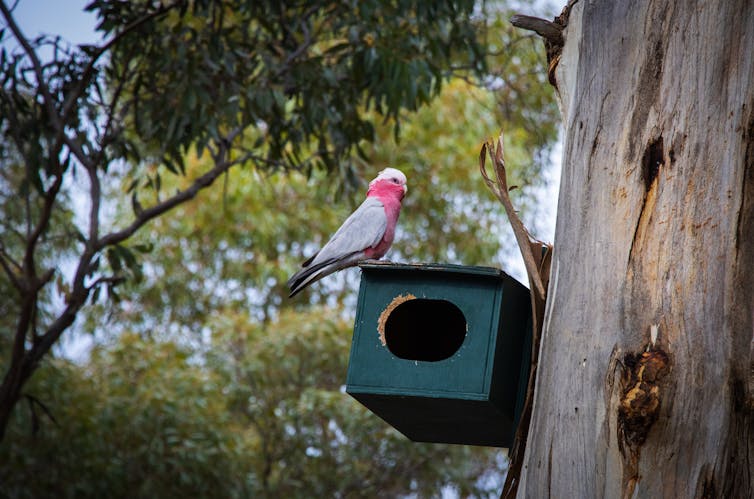
Wildlife worldwide is facing a housing crisis. When land is cleared for agriculture, mining, and urbanisation, habitats and natural refuges go with it, such as tree hollows, rock piles and large logs.
The ideal solution is to tackle the threats that cause habitat loss. But some refuges take hundreds of years to recover once destroyed, and some may never recover without help. Tree hollows, for example, can take 180 years to develop.
As a result, conservationists have increasingly looked to human-made solutions as a stopgap. That’s where artificial refuges come in.
If the goal of artificial refuges is to replace lost or degraded habitat, then it is important we have a good understanding of how well they perform. Our new research reviewed artificial refuges worldwide — and we found the science underpinning them is often not up to scratch.
What Are Artificial Refuges?
Artificial refuges provide wildlife places to shelter, breed, hibernate, or nest, helping them survive in disturbed environments, whether degraded forests, deserts or urban and agricultural landscapes.
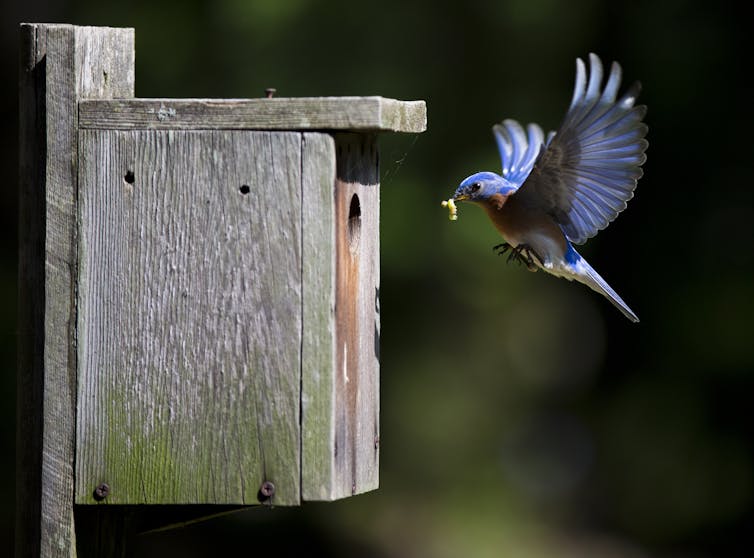
You’re probably already familiar with some. Nest boxes for birds and mammals are one example found in many urban and rural areas. They provide a substitute for tree hollows when land is cleared.
Other examples include artificial stone cavities used in Norway to provide places for newts to hibernate in urban and agricultural environments, and artificial bark used in the USA to allow bats to roost in the absence of trees. And in France, artificial burrows provide refuge for lizards in lieu of their favoured rabbit burrows.
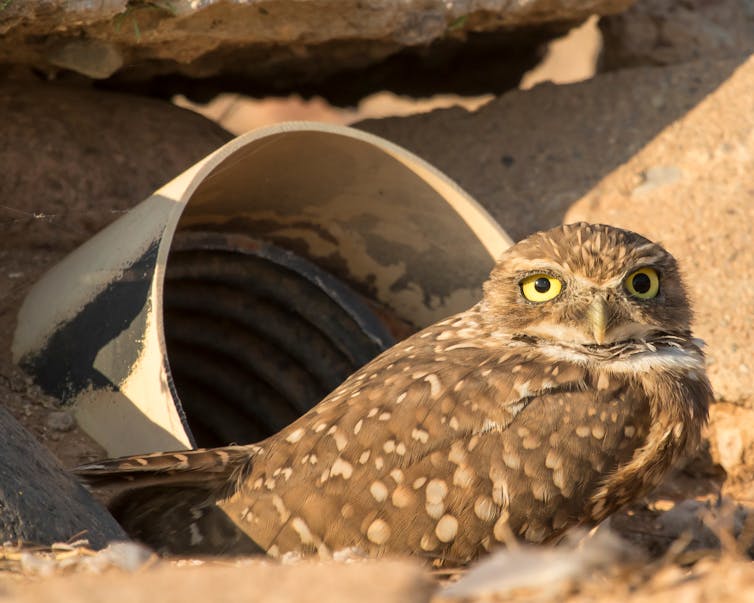
But Do We Know If They Work?
Artificial refuges can be highly effective. In central Europe, for example, nest boxes allowed isolated populations of a colourful bird, the hoopoe, to reconnect — boosting the local genetic diversity.
Still, they are far from a sure thing, having at times fallen short of their promise to provide suitable homes for wildlife.
One study from Catalonia found 42 soprano pipistrelles (a type of bat) had died from dehydration within wooden bat boxes, due to a lack of ventilation and high sun exposure.
Another study from Australia found artificial burrows for the endangered pygmy blue tongue lizard had a design flaw that forced lizards to enter backwards. This increased their risk of predation from snakes and birds.
And the video below from Czech conservation project Birds Online shows a pine marten (a forest-dwelling mammal) and tree sparrow infiltrating next boxes to steal the eggs of Tengmalm’s owls and common starlings.
So Why Is This Happening?
Our research investigated the state of the science regarding artificial refuges worldwide.
We looked at more than 220 studies, and we found they often lacked the rigour to justify their widespread use as a conservation tool. Important factors were often overlooked, such as how temperatures inside artifical refuges compare to natural refuges, and the local abundance of food or predators.
Alarmingly, just under 40% of studies compared artificial refuges to a control, making it impossible to determine the impacts artificial refuges have on the target species, positive or negative.
This is a big problem, because artificial refuges are increasingly incorporated into programs that seek to “offset” habitat destruction. Offsetting involves protecting or creating habitat to compensate for ecological harm caused by land clearing from, for instance, mining or urbanisation.
For example, one project in Australia relied heavily on nest boxes to offset the loss of old, hollow-bearing trees.
But a scientific review of the project showed it to be a failure, due to low rates of uptake by target species (such as the superb parrot) and the rapid deterioration of the nest boxes from falling trees.
Read more: The plan to protect wildlife displaced by the Hume Highway has failed
The Future Of Artificial Refuges
There is little doubt artificial refuges will continue to play a role in confronting Earth’s biodiversity crisis, but their limitations need to be recognised, and the science underpinning them must improve. Our new review points out areas of improvement that spans design, implementation, and monitoring, so take a look if you’re involved in these sorts of projects.
We also urge for more partnerships between ecologists, engineers, designers and the broader community. This is because interdisciplinary collaboration brings together different ways of thinking and helps to shed new light on complex problems.
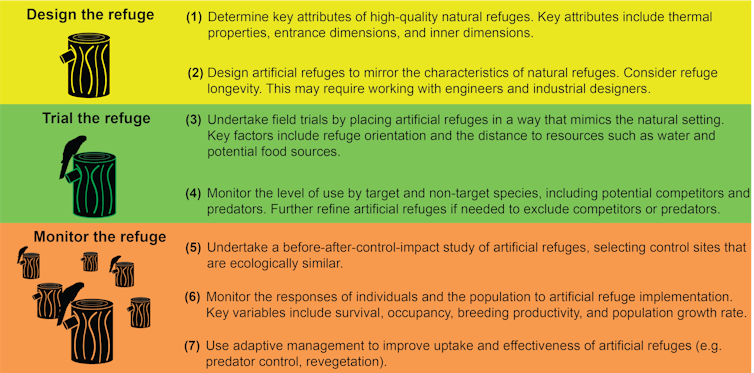
It’s clear improving the science around artificial refuges is well worth the investment, as they can give struggling wildlife worldwide a fighting chance against further habitat destruction and climate change.
Read more: To save these threatened seahorses, we built them 5-star underwater hotels ![]()
Darcy Watchorn, PhD Candidate, Deakin University; Dale Nimmo, Associate Professor in Ecology, Charles Sturt University; Mitchell Cowan, PhD Candidate, Charles Sturt University, and Tim Doherty, ARC DECRA Fellow, University of Sydney
This article is republished from The Conversation under a Creative Commons license. Read the original article.
Pest plants and animals cost Australia around $25 billion a year – and it will get worse
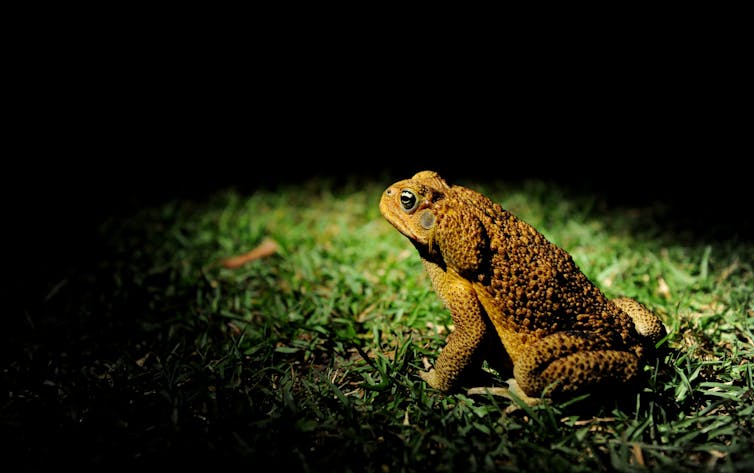
Shamefully, Australia has one of the highest extinction rates in the world. And the number one threat to our species is invasive or “alien” plants and animals.
But invasive species don’t just cause extinctions and biodiversity loss – they also create a serious economic burden. Our research, published today, reveals invasive species have cost the Australian economy at least A$390 billion in the last 60 years alone.
Our paper – the most detailed assessment of its type ever published in this country – also reveals feral cats are the worst invasive species in terms of total costs, followed by rabbits and fire ants.
Without urgent action, Australia will continue to lose billions of dollars every year on invasive species.
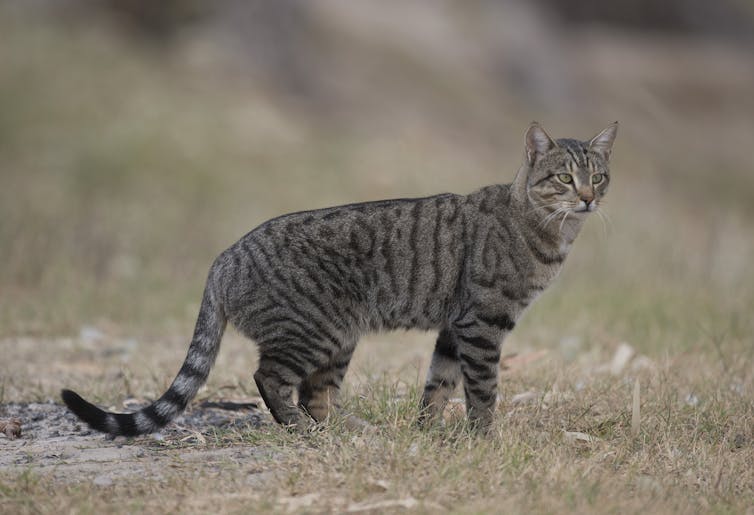
Huge Economic Burden
Invasive species are those not native to a particular ecosystem. They are introduced either by accident or on purpose and become pests.
Some costs involve direct damage to agriculture, such as insects or fungi destroying fruit. Other examples include measures to control invasive species like feral cats and cane toads, such as paying field staff and buying fuel, ammunition, traps and poisons.
Our previous research put the global cost of invasive species at A$1.7 trillion. But this is most certainly a gross underestimate because so many data are missing.
Read more: Attack of the alien invaders: pest plants and animals leave a frightening $1.7 trillion bill
As a wealthy nation, Australia has accumulated more reliable cost data than most other regions. These costs have increased exponentially over time – up to sixfold each decade since the 1970s.
We found invasive species now cost Australia around A$24.5 billion a year, or an average 1.26% of the nation’s gross domestic product. The costs total at least A$390 billion in the past 60 years.

Worst Of The Worst
Our analysis found feral cats have been the most economically costly species since 1960. Their A$18.7 billion bill is mainly associated with attempts to control their abundance and access, such as fencing, trapping, baiting and shooting.
Feral cats are a main driver of extinctions in Australia, and so perhaps investment to limit their damage is worth the price tag.
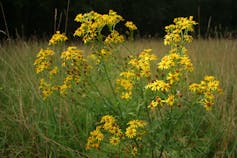
As a group, the management and control of invasive plants proved the worst of all, collectively costing about A$200 billion. Of these, annual ryegrass, parthenium and ragwort were the costliest culprits because of the great effort needed to eradicate them from croplands.
Invasive mammals were the next biggest burdens, costing Australia A$63 billion.
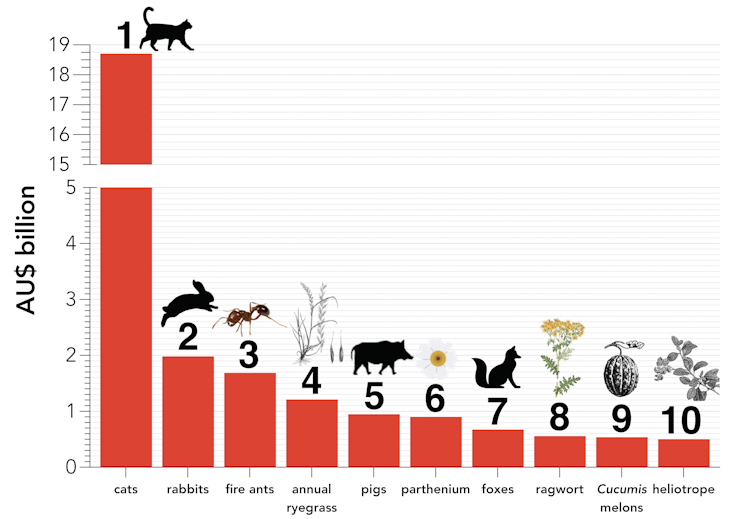
Variation Across Regions
For costs that can be attributed to particular states or territories, New South Wales had the highest costs, followed by Western Australia then Victoria.
Red imported fire ants are the costliest species in Queensland, and ragwort is the economic bane of Tasmania.
The common heliotrope is the costliest species in both South Australia and Victoria, and annual ryegrass tops the list in WA.
In the Northern Territory, the dothideomycete fungus that causes banana freckle disease brings the greatest economic burden, whereas cats and foxes are the costliest species in the ACT and NSW.
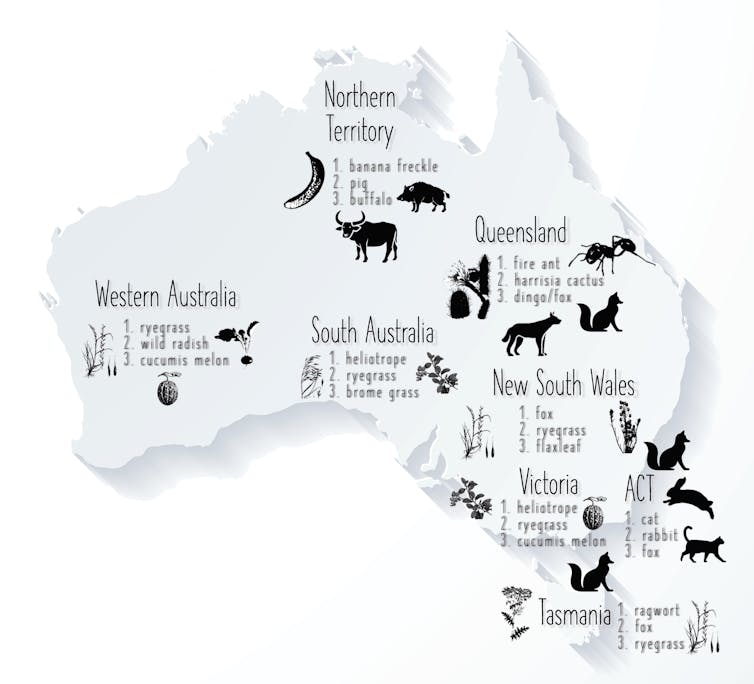
Better Assessments Needed
Our study is one of 19 region-specific analyses released today. Because the message about invasive species must get out to as many people as possible, our article’s abstract was translated into 24 languages.
This includes Pitjantjatjara, a widely spoken Indigenous language.
Even the massive costs we reported are an underestimate. This is because of we haven’t yet surveyed all the places these species occur, and there is a lack of standardised reporting by management authorities and other agencies.
For example, our database lists several fungal plant pathogens. But no cost data exist for some of the worst offenders, such as the widespread Phytophthora cinnamomi pathogen that causes major crop losses and damage to biodiversity.
Developing better methods to estimate the environmental impacts of invasive species, and the benefit of management actions, will allow us to use limited resources more efficiently.

A Constant Threat

Many species damaging to agriculture and the environment are yet to make it to our shores.
The recent arrival in Australia of fall armyworm, a major agriculture pest, reminds us how invasive species will continue their spread here and elsewhere.
As well as the economic damage, invasive species also bring intangible costs we have yet to measure adequately. These include the true extent of ecological damage, human health consequences, erosion of ecosystem services and the loss of cultural values.
Without better data, increased investment, a stronger biosecurity system and interventions such as animal culls, invasive species will continue to wreak havoc across Australia.
The authors acknowledge the Traditional Owners of the lands on which they did this research.
Ngadlu tampinthi yalaka ngadlu Kaurna yartangka inparrinthi. Ngadludlu tampinthi, parnaku tuwila yartangka.![]()
Corey J. A. Bradshaw, Matthew Flinders Professor of Global Ecology and Models Theme Leader for the ARC Centre of Excellence for Australian Biodiversity and Heritage, Flinders University and Andrew Hoskins, Research scientist CSIRO Health and Biosecurity, CSIRO
This article is republished from The Conversation under a Creative Commons license. Read the original article.
More livestock, more carbon dioxide, less ice: the world’s climate change progress since 2019 is (mostly) bad news
Thomas Newsome, University of Sydney; Christopher Wolf, Oregon State University, and William Ripple, Oregon State UniversityBack in 2019, more than 11,000 scientists declared a global climate emergency. They established a comprehensive set of vital signs that impact or reflect the planet’s health, such as forest loss, fossil fuel subsidies, glacier thickness, ocean acidity and surface temperature.
In a new paper published today, we show how these vital signs have changed since the original publication, including through the COVID-19 pandemic. In general, while we’ve seen lots of positive talk and commitments from some governments, our vital signs are mostly not trending in the right direction.
So, let’s look at how things have progressed since 2019, from the growing number of livestock to the meagre influence of the pandemic.
Is It All Bad News?
No, thankfully. Fossil fuel divestment and fossil fuel subsidies have improved in record-setting ways, potentially signalling an economic shift to a renewable energy future.
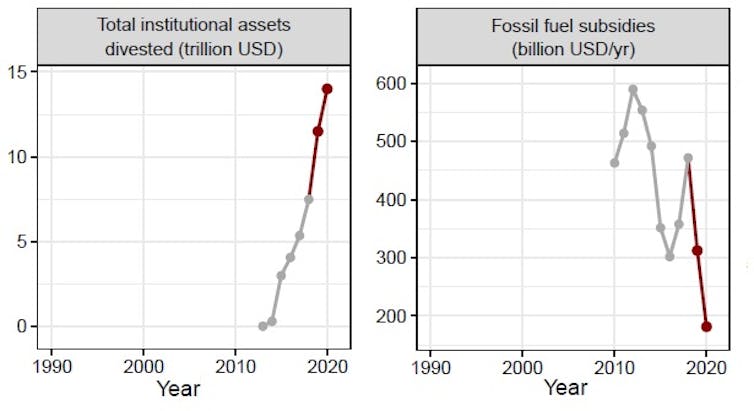
However, most of the other vital signs reflect the consequences of the so far unrelenting “business as usual” approach to climate change policy worldwide.
Especially troubling is the unprecedented surge in climate-related disasters since 2019. This includes devastating flash floods in the South Kalimantan province of Indonesia, record heatwaves in the southwestern United States, extraordinary storms in India and, of course, the 2019-2020 megafires in Australia.
In addition, three main greenhouse gases — carbon dioxide, methane and nitrous oxide — set records for atmospheric concentrations in 2020 and again in 2021. In April this year, carbon dioxide concentration reached 416 parts per million, the highest monthly global average concentration ever recorded.

Last year was also the second hottest year in recorded history, with the five hottest years on record all occurring since 2015.
Ruminant livestock — cattle, buffalo, sheep, and goats — now number more than 4 billion, and their total mass is more than that of all humans and wild mammals combined. This is a problem because these animals are responsible for impacting biodiversity, releasing huge amounts of methane emissions, and land continues to be cleared to make room for them.
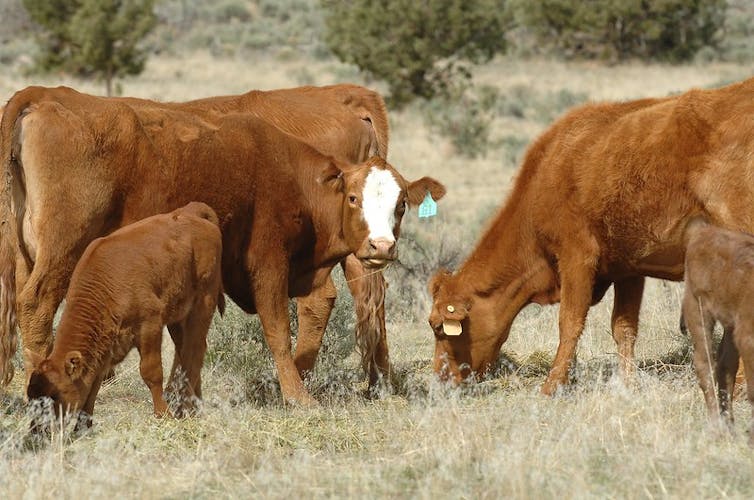
In better news, recent per capita meat production declined by about 5.7% (2.9 kilograms per person) between 2018 and 2020. But this is likely because of an outbreak of African swine fever in China that reduced the pork supply, and possibly also as one of the impacts of the pandemic.
Tragically, Brazilian Amazon annual forest loss rates increased in both 2019 and 2020. It reached a 12-year high of 1.11 million hectares deforested in 2020.
Ocean acidification is also near an all-time record. Together with heat stress from warming waters, acidification threatens the coral reefs that more than half a billion people depend on for food, tourism dollars and storm surge protection.
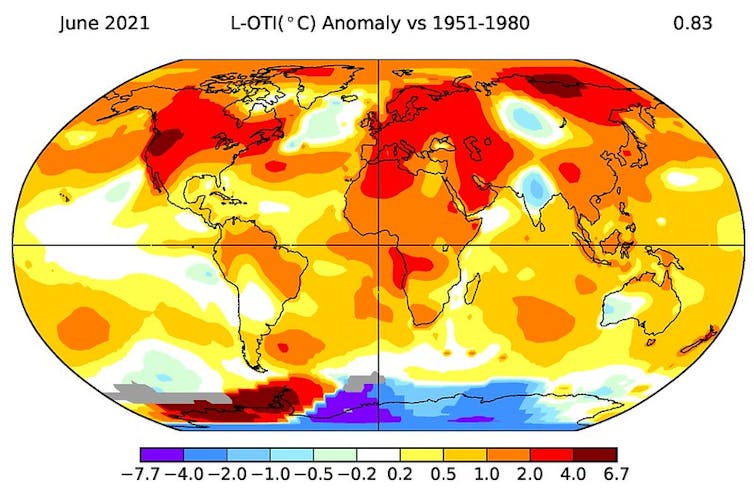
What About The Pandemic?
With its myriad economic interruptions, the COVID-19 pandemic had the side effect of providing some climate relief, but only of the ephemeral variety.
For example, fossil-fuel consumption has gone down since 2019 as did airline travel levels.
But all of these are expected to significantly rise as the economy reopens. While global gross domestic product dropped by 3.6% in 2020, it is projected to rebound to an all-time high.
So, a major lesson of the pandemic is that even when fossil-fuel consumption and transportation sharply decrease, it’s still insufficient to tackle climate change.
There is growing evidence we’re getting close to or have already gone beyond tipping points associated with important parts of the Earth system, including warm-water coral reefs, the Amazon rainforest and the West Antarctic and Greenland ice sheets.
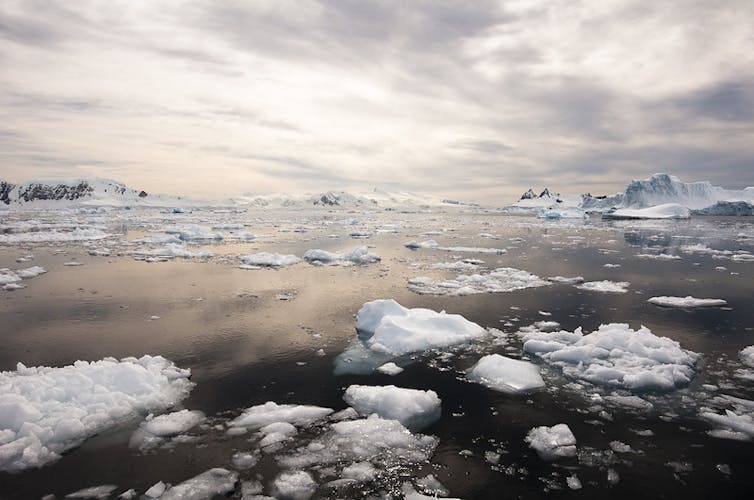
OK, So What Do We Do About It?
In our 2019 paper, we urged six critical and interrelated steps governments — and the rest of humanity — can take to lessen the worst effects of climate change:
prioritise energy efficiency, and replace fossil fuels with low-carbon renewable energy
reduce emissions of short-lived pollutants such as methane and soot
curb land clearing to protect and restore the Earth’s ecosystems
reduce our meat consumption
move away from unsustainable ideas of ever-increasing economic and resource consumption
stabilise and, ideally, gradually reduce human populations while improving human well-being especially by educating girls and women globally.
These solutions still apply. But in our updated 2021 paper, we go further, highlighting the potential for a three-pronged approach for near-term policy:
a globally implemented carbon price
a phase-out and eventual ban of fossil fuels
strategic environmental reserves to safeguard and restore natural carbon sinks and biodiversity.
A global price for carbon needs to be high enough to induce decarbonisation across industry.
And our suggestion to create strategic environmental reserves, such as forests and wetlands, reflects the need to stop treating the climate emergency as a stand-alone issue.
By stopping the unsustainable exploitation of natural habitats through, for example, creeping urbanisation, and land degradation for mining, agriculture and forestry, we can reduce animal-borne disease risks, protect carbon stocks and conserve biodiversity — all at the same time.

Is This Actually Possible?
Yes, and many opportunities still exist to shift pandemic-related financial support measures into climate friendly activities. Currently, only 17% of such funds had been allocated that way worldwide, as of early March 2021. This percentage could be lifted with serious coordinated, global commitment.
Greening the economy could also address the longer term need for major transformative change to reduce emissions and, more broadly, the over-exploitation of the planet.
Our planetary vital signs make it clear we need urgent action to address climate change. With new commitments getting made by governments all over the world, we hope to see the curves in our graphs changing in the right directions soon.
Read more: 11,000 scientists warn: climate change isn't just about temperature ![]()
Thomas Newsome, Academic Fellow, University of Sydney; Christopher Wolf, Postdoctoral Scholar, Oregon State University, and William Ripple, Distinguished Professor and Director, Trophic Cascades Program, Oregon State University
This article is republished from The Conversation under a Creative Commons license. Read the original article.
A wet winter, a soggy spring: what is the negative Indian Ocean Dipole, and why is it so important?
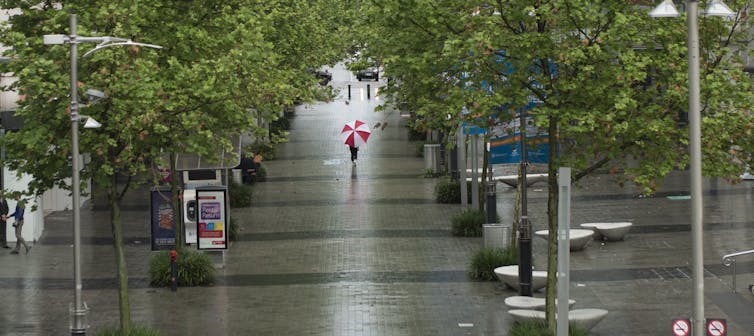
This month we’ve seen some crazy, devastating weather. Perth recorded its wettest July in decades, with 18 straight days of relentless rain. Overseas, parts of Europe and China have endured extensive flooding, with hundreds of lives lost and hundreds of thousands of people evacuated.
And last week, Australia’s Bureau of Meteorology officially declared there is a negative Indian Ocean Dipole — the first negative event in five years — known for bringing wet weather.
But what even is the Indian Ocean Dipole, and does it matter? Is it to blame for these events?
What Is The Indian Ocean Dipole?
The Indian Ocean Dipole, or IOD, is a natural climate phenomenon that influences rainfall patterns around the Indian Ocean, including Australia. It’s brought about by the interactions between the currents along the sea surface and atmospheric circulation.
It can be thought of as the Indian Ocean’s cousin of the better known El Niño and La Niña in the Pacific. Essentially, for most of Australia, El Niño brings dry weather, while La Niña brings wet weather. The IOD has the same impact through its positive and negative phases, respectively.
Positive IODs are associated with an increased chance for dry weather in southern and southeast Australia. The devastating Black Summer bushfires in 2019–20 were linked to an extreme positive IOD, as well as human-caused climate change which exacerbated these conditions.
Negative IODs tend to be less frequent and not as strong as positive IOD events, but can still bring severe climate conditions, such as heavy rainfall and flooding, to parts of Australia.
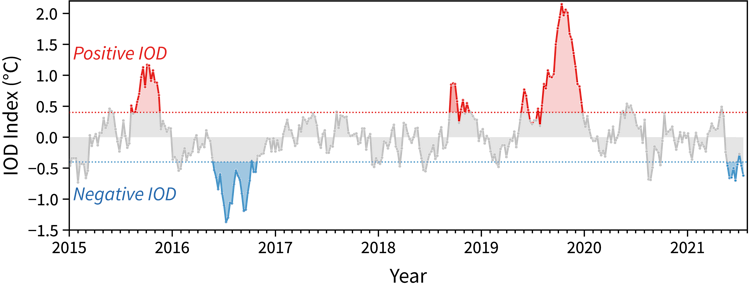
The IOD is determined by the differences in sea surface temperature on either side of the Indian Ocean.
During a negative phase, waters in the eastern Indian Ocean (near Indonesia) are warmer than normal, and the western Indian Ocean (near Africa) are cooler than normal.
Read more: Explainer: El Niño and La Niña
This causes more moisture-filled air to flow towards Australia, favouring wind pattern changes in a way that promotes more rainfall to southern parts of Australia. This includes parts of Western Australia, South Australia, Victoria, NSW and the ACT.
Generally, IOD events start in late autumn or winter, and can last until the end of spring — abruptly ending with the onset of the northern Australian monsoon.

Why Should We Care?
We probably have a wet few months ahead of us.
The negative IOD means the southern regions of Australia are likely to have a wet winter and spring. Indeed, the seasonal outlook indicates above average rainfall for much of the country in the next three months.
In southern Australia, a negative IOD also means we’re more likely to get cooler daytime temperatures and warmer nights. But just because we’re more likely to have a wetter few months doesn’t mean we necessarily will — every negative IOD event is different.
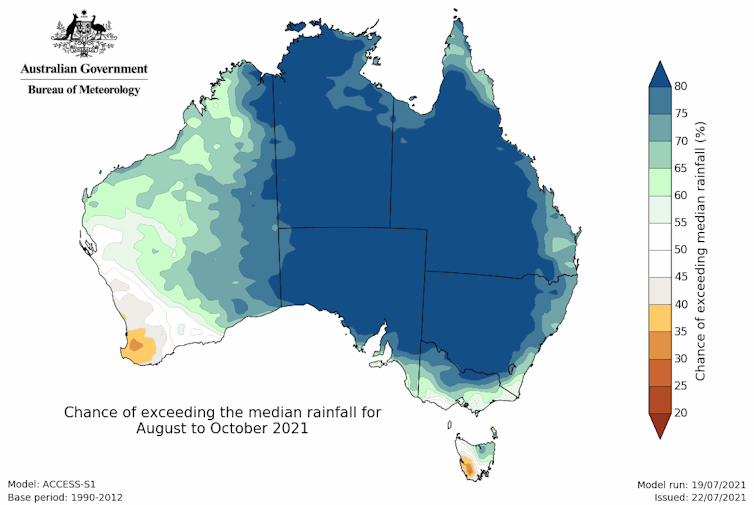
While the prospect of even more rain might dampen some spirits, there are reasons to be happy about this.
First of all, winter rainfall is typically good for farmers growing crops such as grain, and previous negative IOD years have come with record-breaking crop production.
In fact, negative IOD events are so important for Australia that their absence for prolonged periods has been blamed for historical multi-year droughts in the past century over southeast Australia.
Negative IOD years can also bring better snow seasons for Australians. However, the warming trend from human-caused climate change means this signal isn’t as clear as it was in the past.
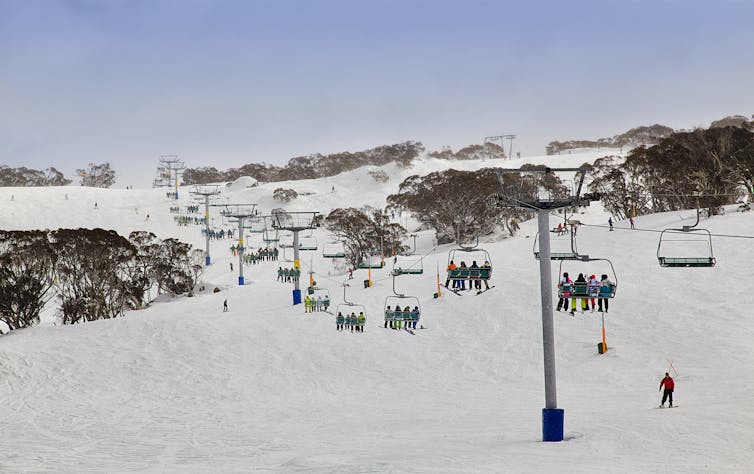
It’s Not All Good News
This is the first official negative IOD event since 2016, a year that saw one of the strongest negative IOD events on record. It resulted in Australia’s second wettest winter on record and flooding in parts of NSW, Victoria, and South Australia.
The 2016 event was also linked to devastating drought in East Africa on the other side of the Indian Ocean, and heavy rainfall in Indonesia.
Thankfully, current forecasts indicate the negative IOD will be a little milder this time, so we hopefully won’t see any devastating events.
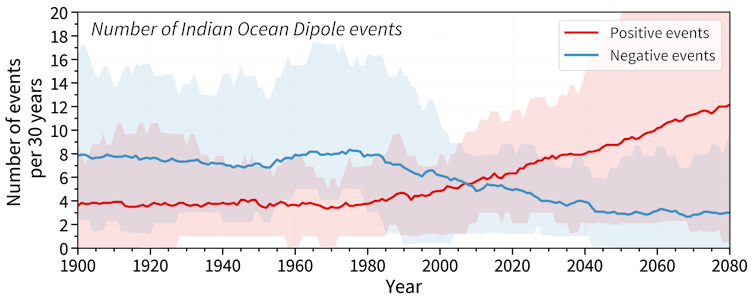
Is The Negative IOD Behind The Recent Wet Weather?
It’s too early to tell, but most likely not.
While Perth is experiencing one of its wettest Julys on record, the southwest WA region has historically been weakly influenced by negative IODs.
Negative IODs tend to be associated with moist air flow and lower atmospheric pressure further north and east than Perth, such as Geraldton to Port Hedland.
Outside of Australia, there has been extensive flooding in China and across Germany, Belgium, and The Netherlands.
It’s still early days and more research is needed, but these events look like they might be linked to the Northern Hemisphere’s atmospheric jet stream, rather than the negative IOD.
The jet stream is like a narrow river of strong winds high up in the atmosphere, formed when cool and hot air meet. Changes in this jet stream can lead to extreme weather.
What About Climate Change?
The IOD — as well as El Niño and La Niña — are natural climate phenomena, and have been occurring for thousands of years, before humans started burning fossil fuels. But that doesn’t mean climate change today isn’t having an effect on the IOD.
Read more: Why drought-busting rain depends on the tropical oceans
Scientific research is showing positive IODs — linked to drier conditions in eastern Australia — have become more common. And this is linked to human-caused climate change influencing ocean temperatures.
Climate models also suggest we may experience more positive IOD events in future, including increased chances of bushfires and drought in Australia, and fewer negative IOD events. This may mean we experience more droughts and less “drought-breaking” rains, but the jury’s still out.
When it comes to the recent, devastating floods overseas, scientists are still assessing how much of a role climate change played.
But in any case, we do know one thing for sure: rising global temperatures from climate change will cause more frequent and severe extreme events, including the short-duration heavy rainfalls associated with flooding, and heatwaves.
To avoid worse disasters in our future, we need to cut emissions drastically and urgently.
Nicky Wright, Research Fellow, University of Sydney; Andréa S. Taschetto, Associate Professor, UNSW, and Andrew King, ARC DECRA fellow, The University of Melbourne
This article is republished from The Conversation under a Creative Commons license. Read the original article.
Bushcare In Pittwater
Where we work Which day What time
Avalon
Angophora Reserve 3rd Sunday 8:30 - 11:30am
Avalon Dunes 1st Sunday 8:30 - 11:30am
Avalon Golf Course 2nd Wednesday 3 - 5:30pm
Careel Creek 4th Saturday 8:30 - 11:30am
Toongari Reserve 3rd Saturday 9 - 12noon (8 - 11am in summer)
Bangalley Headland 2nd Sunday 9 to 12noon
Bayview
Winnererremy Bay 4th Sunday 9 to 12noon
Bilgola
North Bilgola Beach 3rd Monday 9 - 12noon
Algona Reserve 1st Saturday 9 - 12noon
Plateau Park 1st Friday 8:30 - 11:30am
Church Point
Browns Bay Reserve 1st Tuesday 9 - 12noon
McCarrs Creek Reserve Contact Bushcare Officer To be confirmed
Clareville
Old Wharf Reserve 3rd Saturday 8 - 11am
Elanora
Kundibah Reserve 4th Sunday 8:30 - 11:30am
 Mona Vale
Mona Vale Mona Vale Beach Basin 1st Saturday 8 - 11am
Mona Vale Dunes 2nd Saturday +3rd Thursday 8:30 - 11:30am
Newport
Bungan Beach 4th Sunday 9 - 12noon
Crescent Reserve 3rd Sunday 9 - 12noon
North Newport Beach 4th Saturday 8:30 - 11:30am
Porter Reserve 2nd Saturday 8 - 11am
North Narrabeen
Irrawong Reserve 2nd Saturday 2 - 5pm
Palm Beach
North Palm Beach Dunes 3rd Saturday 9 - 12noon
Scotland Island
Catherine Park 2nd Sunday 10 - 12:30pm
Elizabeth Park 1st Saturday 9 - 12noon
Pathilda Reserve 3rd Saturday 9 - 12noon
Warriewood
Warriewood Wetlands 1st Sunday 8:30 - 11:30am
Whale Beach
Norma Park 1st Friday 9 - 12noon
Western Foreshores
Coopers Point, Elvina Bay 2nd Sunday 10 - 1pm
Rocky Point, Elvina Bay 1st Monday 9 - 12noon
Gardens And Environment Groups And Organisations In Pittwater
Avalon Golf Course Bushcare Needs You


Pittwater Reserves

New Shorebirds WingThing For Youngsters Available To Download
A Shorebirds WingThing educational brochure for kids (A5) helps children learn about shorebirds, their life and journey. The 2021 revised brochure version was published in February 2021 and is available now. You can download a file copy here.
If you would like a free print copy of this brochure, please send a self-addressed envelope with A$1.10 postage (or larger if you would like it unfolded) affixed to: BirdLife Australia, Shorebird WingThing Request, 2-05Shorebird WingThing/60 Leicester St, Carlton VIC 3053.

 Shorebird Identification Booklet
Shorebird Identification Booklet
The Migratory Shorebird Program has just released the third edition of its hugely popular Shorebird Identification Booklet. The team has thoroughly revised and updated this pocket-sized companion for all shorebird counters and interested birders, with lots of useful information on our most common shorebirds, key identification features, sighting distribution maps and short articles on some of BirdLife’s shorebird activities.
The booklet can be downloaded here in PDF file format: http://www.birdlife.org.au/documents/Shorebird_ID_Booklet_V3.pdf
Paper copies can be ordered as well, see http://www.birdlife.org.au/projects/shorebirds-2020/counter-resources for details.
Download BirdLife Australia's children’s education kit to help them learn more about our wading birdlife
Shorebirds are a group of wading birds that can be found feeding on swamps, tidal mudflats, estuaries, beaches and open country. For many people, shorebirds are just those brown birds feeding a long way out on the mud but they are actually a remarkably diverse collection of birds including stilts, sandpipers, snipe, curlews, godwits, plovers and oystercatchers. Each species is superbly adapted to suit its preferred habitat. The Red-necked Stint is as small as a sparrow, with relatively short legs and bill that it pecks food from the surface of the mud with, whereas the Eastern Curlew is over two feet long with a exceptionally long legs and a massively curved beak that it thrusts deep down into the mud to pull out crabs, worms and other creatures hidden below the surface.
Some shorebirds are fairly drab in plumage, especially when they are visiting Australia in their non-breeding season, but when they migrate to their Arctic nesting grounds, they develop a vibrant flush of bright colours to attract a mate. We have 37 types of shorebirds that annually migrate to Australia on some of the most lengthy and arduous journeys in the animal kingdom, but there are also 18 shorebirds that call Australia home all year round.
What all our shorebirds have in common—be they large or small, seasoned traveller or homebody, brightly coloured or in muted tones—is that each species needs adequate safe areas where they can successfully feed and breed.
The National Shorebird Monitoring Program is managed and supported by BirdLife Australia.
This project is supported by Glenelg Hopkins Catchment Management Authority and Hunter Local Land Services through funding from the Australian Government’s National Landcare Program. Funding from Helen Macpherson Smith Trust and Port Phillip Bay Fund is acknowledged.
The National Shorebird Monitoring Program is made possible with the help of over 1,600 volunteers working in coastal and inland habitats all over Australia.
The National Shorebird Monitoring program (started as the Shorebirds 2020 project initiated to re-invigorate monitoring around Australia) is raising awareness of how incredible shorebirds are, and actively engaging the community to participate in gathering information needed to conserve shorebirds.
In the short term, the destruction of tidal ecosystems will need to be stopped, and our program is designed to strengthen the case for protecting these important habitats.
In the long term, there will be a need to mitigate against the likely effects of climate change on a species that travels across the entire range of latitudes where impacts are likely.
The identification and protection of critical areas for shorebirds will need to continue in order to guard against the potential threats associated with habitats in close proximity to nearly half the human population.
Here in Australia, the place where these birds grow up and spend most of their lives, continued monitoring is necessary to inform the best management practice to maintain shorebird populations.
BirdLife Australia believe that we can help secure a brighter future for these remarkable birds by educating stakeholders, gathering information on how and why shorebird populations are changing, and working to grow the community of people who care about shorebirds.
To find out more visit: http://www.birdlife.org.au/projects/shorebirds-2020/shorebirds-2020-program
Aussie Bread Tags Collection Points

Backflip Threatens National Standards
- A safe, continuous and step free path of travel from the street entrance and/or parking area to a dwelling entrance that is level.
- At least one, level (step-free) entrance into the dwelling.
- Internal doors and corridors that facilitate comfortable and unimpeded movement between spaces.
- A toilet on the ground (or entry) level that provides easy access.
- A bathroom that contains a hobless shower recess.
- Reinforced walls around the toilet, shower and bath to support the safe installation of grabrails at a later date.
- Stairways designed to reduce the likelihood of injury and also enable future adaptation.
Overcoming Adversity: Tess Lloyd's Insight For Year 12s
I'm reaching out because much like me trying to compete at the Tokyo Games, your year 12 is filled with uncertainty and unforeseen challenges due to Covid-19.Things just aren't going the way we planned, and while your teachers, families and the government are doing all they can to keep school as normal as possible, it doesn't stop us all from feeling a little wobbly at times and isolated from our friends and what is normal.Hey, I know what it's like. When I was your age, I was involved in a serious sailing accident, one which turned my life upside down and altered my plans for year 12.I'll save you the gory details, but in short: our boat was hit by a windsurfer, my crewmate pulled me from the water unconscious, I was taken to hospital – things were pretty dire – I underwent brain surgery, had nine screws and plates put in my head and was put into a medically induced coma.After the accident I had to learn to walk, talk and sail again. I ended up having to do my year 12 over two years, so while all my friends had graduated, I was still left studying. Not fun. As you can imagine, this brought with it great uncertainty.It was a tough time. So much uncertainty made me questions myself – it got me down from time to time.You are living through historic times, we are all, and while there is uncertainty, I know from my experiences that great things can come from adversity.Would I be the athlete I am today without the accident that changed my Year 12? Would I have achieved my childhood dream, and would it have been as special, if I hadn't gone through what I did?I don't know, but what I do know, is we all have greatness in us. We are all tougher than we imagined, and I want to encourage you to embrace adversity and adapt in times of uncertainty.I have no doubt you all will be incredibly successful in all you do, but as you live through the day to day, remember you are sharing the journey.Adversity adds to the triumph and brings out courage we never imagined we had.

More Time To Prepare For HSC
- Extend the hand in date for all major projects by two weeks. The hand-in date for Industrial Technology has been extended by four weeks
- Reschedule Drama performance exams to run from 6 to 17 September
- Music performance exam continue as scheduled, running from 30 August to 10 September
- Reschedule the written exams to begin one week later on 19 October with HSC results out on 17 December.
HSC Online Help
Stay Healthy - Stay Active: HSC 2021

Updated Advice For HSC Students
- Your school will advise you about arrangements for trial HSC exams.
- HSC students in Greater Sydney continue to be able to access school to prepare for the HSC where they cannot do so from home, including to use specialist equipment to work on major projects or rehearse for performance exams.
- As per broader NSW Health advice, HSC students in Greater Sydney are asked to learn from home where possible.
- All HSC students must follow COVID safe practices at school, including wearing a mask.
- The COVID illness/misadventure process is available for students whose ability to work on their major project or performance has been significantly impacted by COVID-19 restrictions.
After Dark Photo Competition: Northern Beaches
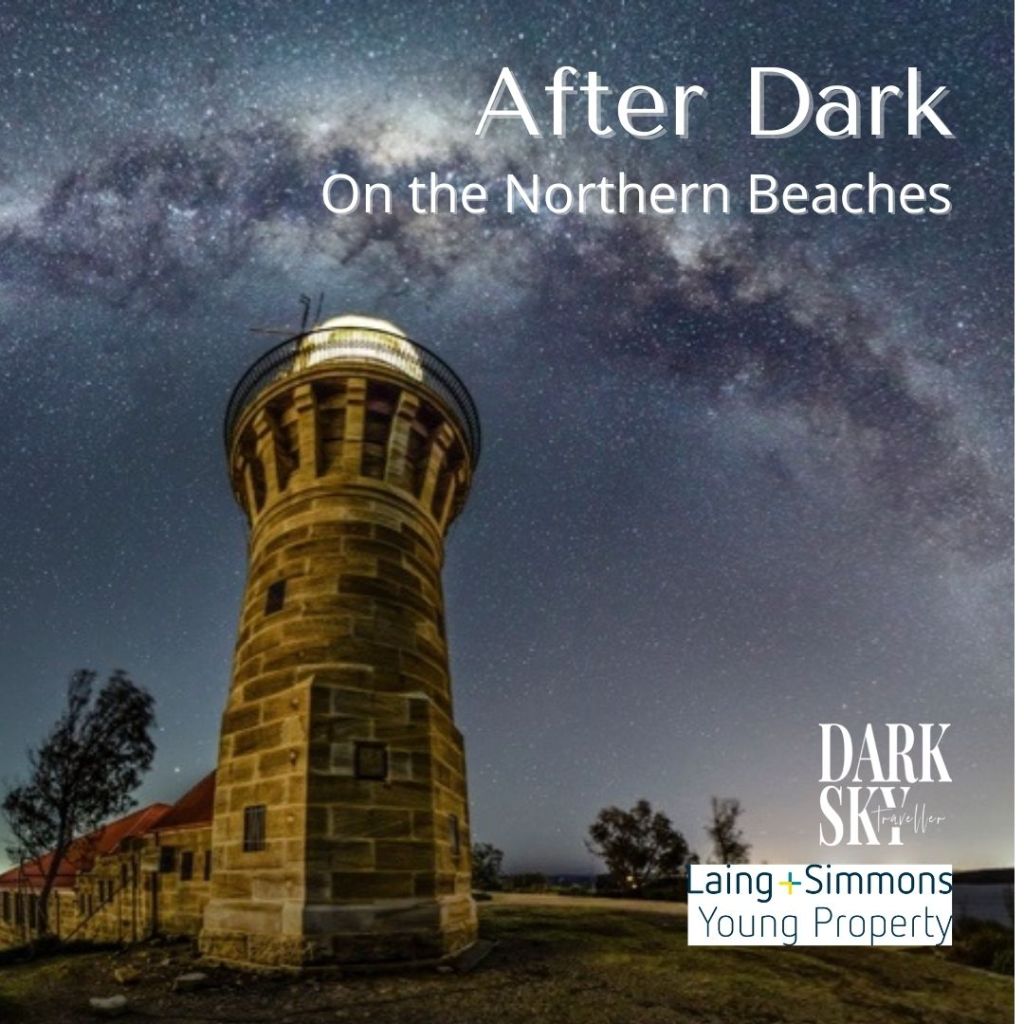 The Northern Beaches are one of the best places in Sydney to view the night sky and appreciate this wonderful asset.
The Northern Beaches are one of the best places in Sydney to view the night sky and appreciate this wonderful asset.Details
- Land – manmade and/or natural formations, wildlife, flora or fauna
- Sea – waterways, beaches, or marine areas, sea life
- Sky – aspects of the night sky, moon, starscapes, clouds or wildlife
- Junior – under 16 years featuring any one of these categories.
- Entry fees are $20 for the first category entered and $10 for each subsequent category entered.
- Up to six entries per category are permitted.
- Fees should be paid by the PayPal gateway on the entry website. Credit and debit cards can be used on this gateway.
- If entry payments are not received by the deadline, then the submitted entries will not be accepted for judging.
- Entries will be accepted only from Australian residents of the Commonwealth of Australia and its Territories.
- There will be two sections of entry – General and Junior (18 or younger)
- There will be three categories of entry for the General Section; Portraying the night time environment featuring Land, Sea or Sky.
- The Junior Section is for photographers 18 years old or younger and will have one open category.
- All entries must be taken within the Northern Beaches LGA and must be taken between sunset and sunrise.
- Images can be taken at any time of the year on or after 1 September 2019.
- The top 5 images of each category will be judged by the organising committee and will be hung at the Studio, Careel Bay Marina for general public display.
- Photographers represented in the top 5 images of each category will be notified that they are in the top 20 images (15 September 17:00 AEST).
- There is a limit of six (6) entries per category per photographer.
- In the case of images with multiple authors, the instigator of the image will be considered to be the principal author and the one who “owns” the image. The principal author MUST have performed the majority of the work to produce the image. All authors MUST be identified and named in the entry form along with their contributions to the production of the image.
- Entries must be in digital form and will be accepted ONLY through submission via the dedicated website at: afterdark.myphotoclub.com.au
- To preserve anonymity, the submitted image files should not contain identifying metadata.
- For judging purposes, still images must be submitted as JPG files with the longest side having a dimension no greater than 4,950 pixels in Adobe 1998 colour space.
- All photographs must have been taken no more than 2 years before the closing date of entry.
- Entry fees are $20 for the first entry and $10 each subsequent entry. Fees should be paid by the PayPal gateway on the entry website. Credit and debit cards can be used on this gateway.
- If entry payments are not received by the deadline, then the submitted entries will not be accepted for judging.
- Photographers of the top 20 images (5 in each category) will be notified 15 September and images printed, framed and hung by the organising. Artists may choose to pay $55 for this service to be undertaken on their part or undertake printing and framing at their own cost. Images must be ready for hanging 17:00 (AEST) 29 September 2021.
- Images will be listed on sale during the exhibition at the artist’s discretion. $100 of the sale will be donated to the charity the Australasian Dark Sky Alliance.
- Winners for the Land Scape, Sea Scape, Sky Scape and Youth entry will be announced Thursday 30th September 2021.
- People’s choice will confirmed by popular vote throughout the exhibition and will be announced on Saturday 30 October, 2021.
- Submissions close at 24:00 (AEST) on Wednesday, 1 September 2021. No entries will be accepted past this date.
- All winners should make an effort to attend the presentation of the awards on 30 September 2021
- The winning entries will be exhibited for the entire Exhibition After Dark, at the Studio, Careel Bay Marina between 30 September and 2 November, 2021.
- Permission to reproduce entries for publication to promote the competition and exhibitions and dark sky-related events and activities on the northern beaches will be assumed as a condition of entry. The copyright of the image remains with the author, and we will try to ensure that the author is credited where the image is used.
- All entries must be true images, faithfully reflecting and maintaining the integrity of the subject. Entries made up of composite images taken at different times and/or at different locations and/or with different cameras will not be accepted. Image manipulations that produce works that are more “digital art” than true astronomical images, will be deemed ineligible. If there is any doubt about the acceptability of an entry, then the competition organisers should be contacted, before the entry is submitted, for adjudication on the matter at the following email address: marnie@darkskytraveller.com.au
- If after the judging process, an image is subsequently determined to have violated the letter and/or the spirit of the rules, then that image will be disqualified. Any prizes consequently awarded for that image must be returned to the competition organisers.
- The competition judges reserve the right to reject any entry that, in the opinion of the judges, does not meet the conditions of entry or is unsuitable for public display. The judges’ decisions will be final.
- Submission of an entry implies acceptance of all the conditions of entry and the decisions of the competition judges.
- Entries Open: 24:00 (AEST) Sunday, 11 July 2021
- Entries Close: 24:00 (AEST) Wednesday, 1 September 2021
- Top 20 announced: 17:00 Wednesday, 15 September 2021
- Photography bump in: Midday Wednesday 29 September 2021
- Exhibition Launch and Presentation of Awards: Thursday 30 September 2021
- Bump out – 2 November 2021
- Category Winner: An image deemed to be the best in that category as judged by the judging panel.
- “The People’s Choice”: This will be judged by gathering votes obtained in the exhibition venue, and online.
- Category Winner: $200 – to each of the image deemed to be the best in each of the four (4) category.
- “The People’s Choice”: $200 – will be judged by gathering votes obtained in the exhibition venue, and online.
2021 Crikey! Magazine Photography Competition
Time To Dance!
From colonial cavalry to mounted police: a short history of the Australian police horse
Stephen Gapps, University of Newcastle and Angus Murray, University of NewcastleAboriginal and Torres Strait Islander readers are advised this article contains names and/or images of deceased people.
Images of mounted police contending with anti-lockdown protesters on the weekend have now gone viral around the world. In fact, mounted police have a long history in Australia.
They have certainly been used as a method of crowd control at countless demonstrations in living memory — from anti-war protests to pro-refugee rallies and everything in between.
But the history of mounted police in Australia goes much deeper.
Read more: Enforcing assimilation, dismantling Aboriginal families: a history of police violence in Australia
Mounted Reconnaissance And Messengers
In early colonial Australia, horses were at a premium. In the 1790s, policing of convicts and bushrangers in the confined region of the Sydney basin was conducted on foot by night watchmen, constables and the colonial military.
By 1801, the then Governor King formed a Body Guard of Light Horse for dispatching his messages to the interior and as a useful personal escort.
By 1816, at the height of the Sydney Wars of Aboriginal resistance, the numbers of horses in the colony had grown.
Their importance as mounted reconnaissance and for use by messengers was critical to Governor Macquarie’s infamous campaign, which ended in the Appin Massacre of April 17, 1816.
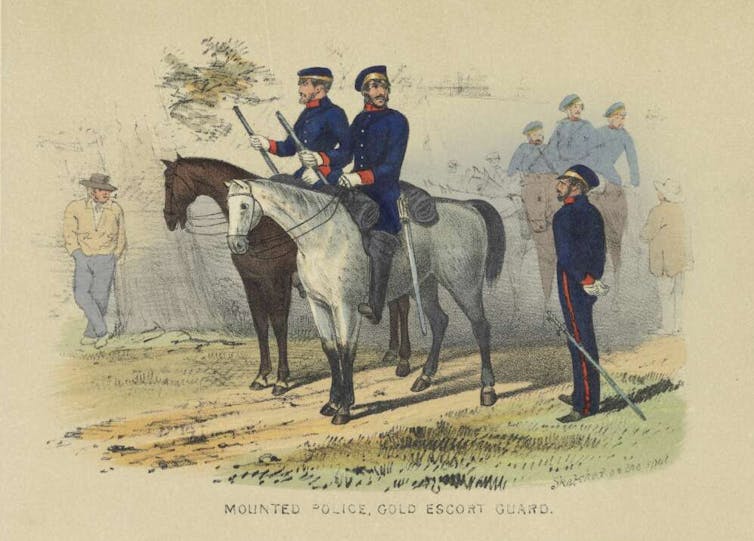
The Horse As A Key Element Of Occupation
Along with firearms and disease, the horse was a key element in occupying Aboriginal land and controlling the largely convict workforce on the frontier.
In the early 1820s, west of the Blue Mountains, the use of horses in the open terrain of the Bathurst Plains was critical in capturing escaped convicts and bushrangers, as well as defending remote outstations against attacks from Wiradjuri people.
Early intrusions into Wiradjuri land were not so much by British colonists, but by the animals they brought with them. In what is now recognised as “co-colonisation”, cattle and sheep did a lot of the hard yards for the British, often well before they arrived in Aboriginal lands.
In 1817, Surveyor General John Oxley thought he was well beyond the limits of settlement when, as he wrote:
to our great surprise we found the distinct marks of cattle tracks [that] must have strayed from Bathurst, from which place we were now distant in a direct line between eighty and ninety miles.
From A Colonial Cavalry To Mounted Police
During the first Wiradjuri War of Resistance between 1822 and 1824, calls were made to the colonial authorities for the formation of a civilian “colonial cavalry” to assist the beleaguered and overstretched military forces. My (Stephen Gapps) forthcoming book, developed in consultation with Wiradjuri community members in central west region of NSW, The Bathurst War, looks in deeper detail at this period.
It was hoped colonial farmers would be their own first line of defence against Aboriginal warrior raids on sheep and cattle stations.
Governor Brisbane wrote to London that in 1824 a mounted force was becoming “daily more essential [for the] vital interests of the of the Colony”.
But by August that year, heavily armed and mounted settlers, overseers and their armed convict workers had decimated Wiradjuri resistance before a formal cavalry militia was established.
After possibly hundreds of Wiradjuri people had been massacred by heavily armed and mounted settlers, a “Horse Patrol” was created in 1825, which soon formally became the Mounted Police.
The Mounted Police were critical during a spree of bushranging soon after — a largely unanticipated side-effect of arming of convict stockworkers to defend themselves against Wiradjuri attacks in 1824.
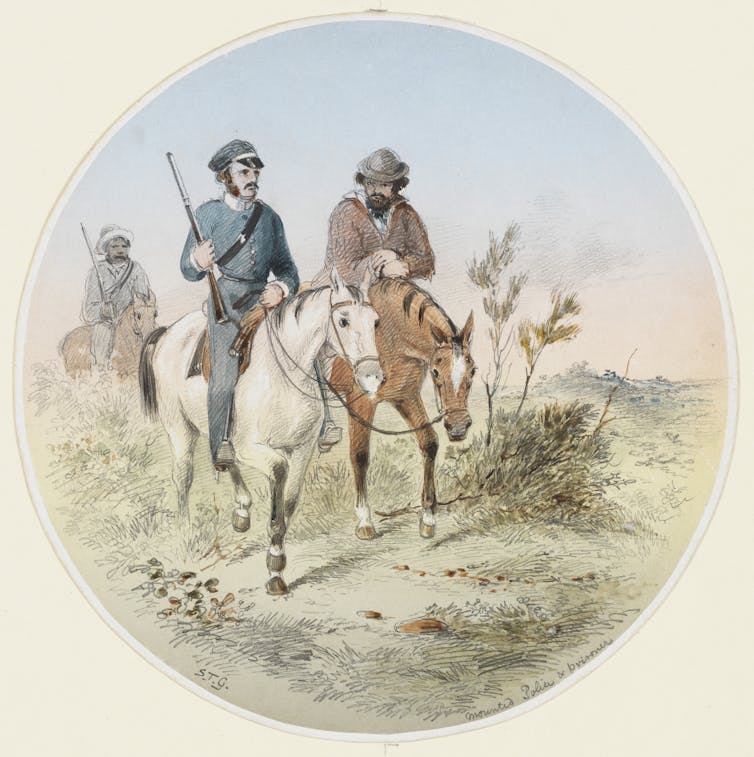
By the 1830s, the force had proved useful as a highly mobile quasi-military unit in combating Aboriginal resistance as well as bushranging.
As the colony continued to expand with an insatiable desire for running cattle and sheep on Aboriginal lands, three regional divisions were based at Bathurst, Goulburn and Maitland.
After conflict between colonists and Gamilaraay warriors on the Liverpool Plains, commander Major Nunn led a Mounted Police detachment on a two-month campaign around the Gwydir and Namoi Rivers, resulting in the Waterloo Creek Massacre on January 26, 1838. Armed colonists soon followed suit, ending in the Myall Creek Massacre in June that year, where colonists killed at least 28 Aboriginal people (possibly more).
The Mounted Police’s military functions came with heavy expenses, which included uniforms, equipment and barracks. During the 1840s, a Border Police force of ex-convicts equipped only with a horse, a gun and rations was created and attached to Commissioners of Crown Lands.
It was funded by a tax on squatters (whose interests they protected) and proved a much cheaper policing option for the frontier.
The Native Mounted Police
By 1850 the “Mounted Police” were disbanded. Another relatively cheap and what proved to be a tragic, if remarkably successful, option had been found — the creation of a “Native Mounted Police” force of Aboriginal men with British officers.
The troopers were provided with uniforms, guns and rations. By the 1860s, particularly in Queensland, the main problem on the frontier was not policing colonists but stopping Aboriginal resistance. So arming Aboriginal fighters was part of a tried and tested British method of exploiting existing hostilities by rewarding those who collaborated and punishing those who resisted.
As Bogaine Spearim, Gamilaraay and Kooma man, activist and creator of the podcast Frontier War Stories has noted, the Queensland Native Mounted Police (NMP) were not only feared by bushrangers such as Ned Kelly, but known for their violence toward the Aboriginal population of Queensland.
The NMP united incredible bush skills with military capability. Their legacy has been the focus of a recent project by Australian researchers Lynley Wallis, Heather Burke and colleagues.
The Role Of Animals In Colonisation And Policing
From 1850, the colonial police force (and then from 1862, the NSW Police force) incorporated mounted police as mobile units in mostly remote locations.
But they also found them useful in urban areas, especially with growing numbers of strikes, political disturbances, protests and riots in the rapidly industrialising cities in the late 19th century.
The use of horses in crowd control has a long history in policing, which itself has a long history in warfare. Among the other issues this presents, we might also consider horses’ long suffering histories of being placed in the front lines of conflict.
Like the inexorable march of sheep and cattle as part of the invasion of Aboriginal lands, understanding the role of animals in colonisation and policing is crucial to a broader understanding of Australian history.
Read more: Make no mistake: Cook’s voyages were part of a military mission to conquer and expand ![]()
Stephen Gapps, Conjoint Lecturer, University of Newcastle and Angus Murray, PhD student, University of Newcastle
This article is republished from The Conversation under a Creative Commons license. Read the original article.
Choosing your senior school subjects doesn’t have to be scary. Here are 6 things to keep in mind

This is the first article in a series providing school students with evidence-based advice for choosing subjects in their senior years.
From about August each year, young people in year 10 go through a round of interviews to close in on their subject selections for years 11 and 12.
They’re given a portfolio full of reading materials. They may also attend vibrant careers markets to get helpful information. The principal and heads of the year give presentations, and occasionally a VIP guest speaker will arrive.
Somewhere at this point, my sobbing daughter had cried: “I’m growing up too quickly!” She’d been told a complex story about ATARs, prerequisites and options for her career path, all with the solemn authority about the importance of making wise decisions.
Studies have shown students experience anxiety around choosing subjects that relate to their desired career path. Nothing as serious as this will have happened in most children’s lives before now.
What if they don’t know what they want to do? Or worse, what if they make a mistake in their subject choices?
The good news is, there is not much need to worry. Choices you make now about your subjects don’t need to have a severe impact on your future.
There are some myths about senior schooling all kids and parents need to know. Here are six of them.
Myth 1: You Need An ATAR To Go To University
There are several pathways to university — an ATAR is only one of them.
The federal education department reports there are significant intakes for courses that don’t require an ATAR. A 2020 report says the share of university offers for applicants with no ATAR or who were non-year 12 applicants was 60.5% in 2020. This was up from 60.1% in 2019.
Some courses, like engineering, normally require an ATAR of somewhere around the mid 80s. But you could also get in through having done a VET certificate or diploma. RMIT, for instance, offers up to two years of credit to transfer from TAFE into an undergraduate degree.
Read more: Your ATAR isn't the only thing universities are looking at
There are many alternative pathways described by most institutions on their websites. Curtin University has a helpful journey finder for students without a competitive ATAR.

A year 12 student, expecting not to gain an ATAR, who is not studying English or doesn’t expect to gain a 50 scaled rank for English, has at least three pathways into Curtin — sitting the Special Tertiary Admissions Test, doing a course at Curtin College, and using a portfolio for assessment.
Curtin also has a UniReady Enabling Program. This is a short course of 17 weeks. Completing the course means you will fulfil Curtin’s minimum admission criteria of a 70 ATAR. Many universities have similar types of preparatory pathways.
Myth 2: Your Senior Subjects Majorly Influence Your Career
With all the disruption we’re experiencing, technical and social, we actually don’t have any idea what types of careers will be available in the future. Industry advice bodies, like the National Skills Commission, recommend students choose subjects that suit their interest and skill set, rather than to prepare for a specific future career.
Reports show today’s 15-year-olds will likely change employers 17 times and have five different careers through their working life. Many of their career may have very little, if any, connection to the senior subjects they took at school.
Read more: Can government actually predict the jobs of the future?
A 2018 report by industry body Deloitte Access Economics showed 72% of employers “demanded” communication skills when hiring and that transferable skills, such as as teamwork, communication, problem-solving, innovation and emotional judgement, “have become widely acknowledged as important in driving business success”.

This can include subjects like music, dance, debating and theatre will teach the exact skills employers value the most.
Myth 3: You Should Do ‘Hard’ Subjects To Get A High ATAR
All subjects are hard if you lack interest or ability. Students are unlikely to do well if they are unhappy and unmotivated.
Research shows being motivated will improve how well you do in something. But academic performance is better associated with internal motivation (such as liking something) than external (like the drive for an ATAR).
Read more: Five tips to help year 12 students set better goals in the final year of school
So, if a student only values a subject for what it might get them, like a high ATAR, they’ll do better than if there was no purpose at all. But they won’t do as well as if they are internally motivated by it.
Myth 4: Your ATAR Will Stand As The Measure Of Your Ability Into The Future
The ATAR is simply a profile of achievement on a limited number of tasks over a defined period. A person at the end of school, aged 17 or 18, hasn’t reached the end of their development.
Studies show there is an interaction between gains in knowledge and expertise, and losses in the speed of cognitive processing as we age (meaning we learn less as we get older, to some extent).

But these losses are offset by an older person’s access to a rich base of experience which can inform their understanding of things and their actions. Also the older a person is, the better developed their self-regulation and motivation.
Our abilities are shaped and reshaped by experience across our lifespan.
Myth 5: Year 12 Will Be Demanding And Stressful
Year 12 can be demanding and stressful, but it doesn’t have to be. The most common source of distress in the senior years comes from anxiety, specifically test anxiety, and the pressures that come from selecting subjects for reasons not driven by interest and ability.
These years should not be devoted to self-flagellation for a high ATAR.
Students with a range of subjects types will have variety in their day and week. They are likely to have the best experience in their senior years.

Research suggests a balanced life underscores success and general achievement, and setting the tone is vital during these formative years.
Myth 6: Taking A VET Subject In Year 11 Or 12 Will Affect Your ATAR
Taking a VET subject reduces the opportunity to take another ATAR subject. It could be argued this puts greater pressure on achievement in the remaining ATAR subjects. But taking a VET subject also reduces the ATAR subjects on your dance card, so they may well be easier to manage.
Including a VET subject is also likely to provide a balanced education in senior years, which may actually improve a student’s chances for a high ATAR.
So here’s what you should think about when making your subject choices:
what do you like?
what comes easily to you?
will the selection give you variety in your day?
in which subjects will you have the most fun?
Read the other articles in our series on choosing senior subjects, here.![]()
Professor Nan Bahr, Deputy Vice Chancellor (Students), Southern Cross University
This article is republished from The Conversation under a Creative Commons license. Read the original article.
Confused about which English subject to choose in year 11 and 12? Here’s what you need to know

This article is part of a series providing school students with evidence-based advice for choosing subjects in their senior years.
English (or an equivalent literacy requirement) is a compulsory subject for all secondary students in Australia. In years 11 and 12 there are several types of English subjects to choose from.
There are different versions of “English” in different states, with various titles and levels of difficulty.
There’s English, English studies, general English, foundation English, English standard, English advanced, English language, English and literature extension and literature. It is important to choose the right version of English to reach your desired destination.
Different Types Of English
The Australian Curriculum is the base for the development of state and territory senior secondary courses. It breaks English down into four broad categories: English, literature, EALD (English as an Additional Language or Dialect) and essential English.
Literature is known as the most challenging of the four and focuses on literary texts such as poetry, prose and drama. Literature explores the creative use of language through in-depth study of culturally important literary works.

For example, students may explore colonial representations of race in Joseph Conrad’s novella Heart of Darkness, the beauty and unsettling nature of Shakespeare’s sonnets, or Australian cultural identity in Jack Davis’ play No Sugar.
Literature is more like philosophy or history than what we think of as English from NAPLAN (grammar and comprehension).
Literature used to be a popular subject in some states, but its popularity has been falling. Recent figures from Victoria show while literature was the 15th most commonly studied subject in 2015 in the senior years, it tumbled to 19th in 2019. In 2020, it fell off the top 20 list entirely.
In Western Australia, some schools have dropped literature because of low enrolments. A report in 2018 noted the percentage of year 12s studying literature fell from 26% in 1998 to 11% in 2017.
Theories about this fall include the fact literature is seen as an elitist subject, that you have to be someone who reads all the time to take it, and you have to love great 19th and 20th century literature.
These things aren’t true. Anyone interested but willing to challenge themselves should and can take literature. And some examples of recent texts include Breath (Tim Winton), The Handmaid’s Tale (Margaret Atwood) and The Book Thief (Marcus Zusak). There are many “fun” texts students can study and while literature is challenging it can also be enriching, and can cultivate a love of reading.
Read more: 5 Australian books that can help young people understand their place in the world
Also, my research showed some students found studying literary texts to be an empowering experience. One year 12 student said:
I’m the black sheep in my household. I identified with Rose (a character from Tim Winton’s Cloudstreet) quite a bit as the strong girl who was being resilient and was trying to break out of where she was. I do performing and everyone else does engineering or chemistry.
English develops analytical and creative skills through studying a range of literary and non-literary texts (including oral, multimedia and digital “texts” such as documentaries, graphic novels and feature articles).
If you’re not in love with reading or writing but want to study subjects such as commerce or engineering at university, this may be the course for you.

Although it’s seen as easier than literature, not everyone finds it that way. One Victorian student who had taken both literature and English wrote actually found the latter harder. This is because she felt she had more freedom in literature while English “wasn’t really compatible with tangents”. She found it harder to be more concise in her expression.
English as an additional language is designed for students with English is their second language. This is an ATAR subject in some states such as Western Australia and Victoria.
Essential English develops students’ use of language, but it is not an ATAR subject. Essential English and general English are tailored to students who would like to graduate from high school but don’t want to go to university.
How Do I Decide Which To Take?
The first question you can ask is: “Do I want to go to university?”. If the answer is “yes”, you are likely to choose an English subject that will go towards your ATAR.
It’s worth noting you can still get into university without an ATAR, or without a very high one, but it does give your more options.
Read more: Don't stress, your ATAR isn't the final call. There are many ways to get into university
ATAR subjects are traditionally seen as more difficult than non-ATAR ones, although for anyone who has ever studied non-ATAR subjects, this is debatable.
So, let’s take an example student, Mia. She is tossing up between medicine, mechanics or music teaching.
If Mia wants to become a mechanic, she does not need an ATAR to get a school-based apprenticeship. She may be better off studying general English, which focuses on the skills students need to become competent communicators in everyday life, or at work.

But if Mia wants to be a music teacher or doctor, she is better off choosing an English subject that contributes to an ATAR. If she would like to be a teacher, she could choose something like English standard or English advanced and will need an ATAR score over 70 (but more than likely around 85). If she would like to study medicine, she will need an ATAR closer to 99.
What About Scaling?
Some English subjects are scaled higher, while others lower.
Scaling uses an algorithm to make subject scores more or less comparable to each other. This also makes sure if a student takes a difficult subject, they aren’t disadvantaged. It’s easier to get an A in an easier subject than a harder subject, so scaling generally adds more points to students doing harder subjects.
ATAR literature, a traditionally more difficult course, is usually scaled up. In Western Australia in 2020, for instance, English was scaled down about two points and literature was scaled up by nearly seven.
Read more: Choosing your senior school subjects doesn't have to be scary. Here are 6 things to keep in mind
But students shouldn’t just take a subject like literature because it’s scaled up. Because it’s harder, they may get a lower mark and the scaling won’t make much difference. You should do what interests you, and what you think will contribute best to your future while ensuring a good senior school experience.
What Could I Do With English?
English is compulsory because you need it for everything in life, from social communication to employment.
Studying literature, which isn’t compulsory, can be useful for occupations that require an advanced command of language such as journalism, research, law, public relations, philosophy and politics.
Read the other articles in our series on choosing senior subjects, here.![]()
Kirsten Lambert, Lecturer, Edith Cowan University
This article is republished from The Conversation under a Creative Commons license. Read the original article.
History made the world we live in: here’s what you’ll learn if you choose it in years 11 and 12

This article is part of a series providing school students with evidence-based advice for choosing subjects in their senior years.
History is for students curious about the world. It involves discovery, evaluation and imagination.
Around 40% of Australian senior students chose to study year 11 and 12 history in 2016. It was more popular than other humanities subjects such as geography and psychology and more girls chose to enrol (23%) than boys (18%).
Here’s what you need to know if you’re considering taking history in the senior years.
What Kinds Of History Subject Are There?
There are a variety of history subjects offered across Australia. For example, Victoria’s history subjects include Australian history, 20th century history, ancient history and revolutions.
Australian history is only available in Victoria. It investigates Aboriginal history and contact with colonialists, through to Federation and 20th century nation building. But the subject is losing popularity. The number of students who completed Australian history almost halved between 2014 and 2019, from 1,245 in 2014 to just 632 in 2019.
Teachers are aiming to make it more interesting and the structure of Australian history will change next year. Instead of learning the entire span of Australian history chronologically, Victorian students will conduct two semester-length investigations of themes including creating a nation, power and resistance, and war and upheaval.
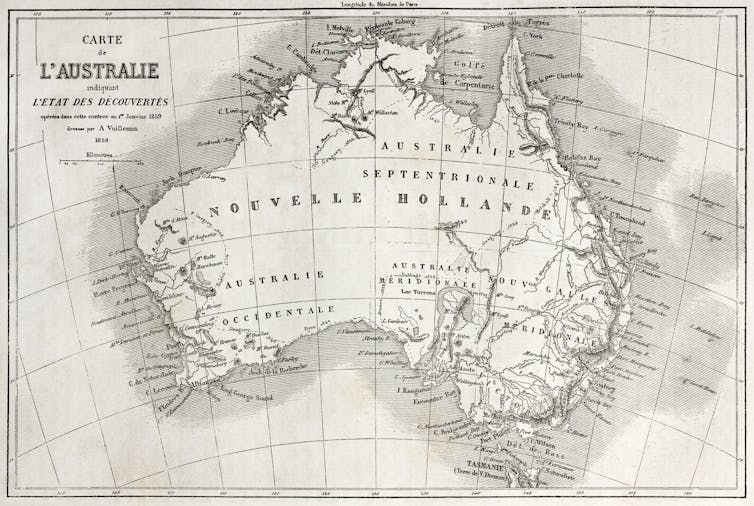
Ancient history and revolutions explores societies such as Ancient Egypt, classical Rome and Greece with a focus on politics, military and social history. Revolutions includes an in-depth study of French, American and Russian revolutions.
Year 12 student Taylah told us she took ancient history because:
I always had a fascination with the ancient Egyptian civilisation. I was especially interested in how civilisations have or haven’t learned from the past.
Modern history is available in New South Wales and Queensland. This generally focuses on prominent topics and events from the French Revolution to the present. It covers major conflicts such as the world wars, the Cold War, the Vietnam war, international race relations and peace initiatives such as the beginnings of the United Nations.
Modern history was the most popular course in NSW in 2020, with similar numbers of boys and girls choosing it.
Uniquely, NSW offers an extension history course, which examines historical theory and the uses of history today. This course features a major research project that places students in the role of a historian, extending learning beyond content to communicate conceptual understandings.
What Will I Be Learning?
History is for students interested in understanding the origins of the present and who like to see beyond simple, right-or-wrong answers.
Samantha who is studying teaching at university told us she chose history in years 11 and 12 because:
It always fascinated me how history made the world we live in. I also thought it was interesting how in Australia we are so tied to the Western world, considering geographically we are quite removed.
History isn’t just about learning facts like names and dates. Senior history opens up knowledge to be questioned and explored in depth. For example, students can compare and contrast the revolutions of France and Russia and investigate whether and how the first world war was a precursor to the second.

Jack who has a bachelor in business studies told us he:
enjoyed the combination of skills involved in studying history: writing, critical analysis and assessment of a range of different sources such as books, film and interviews.
A major skill students learn is historical inquiry. This means finding out about the past by researching information from different perspectives, locations and times. Students synthesise information to form a historical evidence-based argument.
Let’s take competing perspectives on Aboriginal civilisation before the British arrived in Australia. For years, our history textbooks told us Aboriginal people were hunter gatherers moving from place to place. But more recent evidence claims many Aboriginal people cultivated the land for farming and aquaculture.
There is still debate about this in the media and in the classroom. Students could research the topic for themselves, read up on the different types of evidence and present their own conclusions.
History is best suited to students who enjoy research as well as reading and writing an argument in response to a question. Students need to be prepared for assigned reading and extended writing tasks.
Where History Takes You After School?
Many careers are open to those who study history in senior school and later at university. Some careers that come directly from history study include:
historian, genealogist (family history researcher) or archaeologist
school teacher
museum guide, curator, or education officer (someone who develops education materials and experiences in museums and other public history sites)
research officer for a policy institution, a member of parliament or industry think tank
librarian or archivist (including in conservation and preservation).
Senior curator at a rail museum, Jennifer, told us:
History was the only subject I liked. I chose modern and ancient history for senior because I hoped to have a career in history. I loved learning, analysing and evaluating, finding different sources and opinions, and deep discussions in class. Still choosing history today.
But you don’t just have to take history for a career in it. History also helps develop a range of employment-related skills.
Many employers appreciate skills such as being able to write and communicate effectively and persuasively, to think critically, to consider multiple perspectives and to logically consider consequences based on evidence.
These skills are vital for careers such as in journalism, law, human resources, policy, diplomacy, and other jobs that require critical thinking and clear communication skills.
Rebecca, who studied modern and ancient history in school in Brisbane and then at university told us:
Studying social sciences gives a greater understanding and interest of the wider world […] I work in the UK public service now, and history provides you with excellent analytical, investigation and communication skills. Lots of people in my office have history degrees.

When selecting subjects for senior school, there is one important consideration that is often overlooked or set aside. The senior years are hectic. Students should choose at least some of their school subjects for themselves, because they like them and they think the subject is valuable for them.
Read more: Choosing your senior school subjects doesn't have to be scary. Here are 6 things to keep in mind
For many students, history is one of these subjects. By investigating the past, students discover insights about humans and the world they have inherited. These can help them find the paths they will take beyond school.
Read the other articles in our series on choosing senior subjects, here.![]()
Heather Sharp, Associate Professor, History and Curriculum Studies, University of Newcastle and Debra Donnelly, Senior Lecturer, University of Newcastle
This article is republished from The Conversation under a Creative Commons license. Read the original article.
Thinking of choosing a health or PE subject in years 11 and 12? Here’s what you need to know

This article is part of a series providing school students with evidence-based advice for choosing subjects in their senior years.
From kindergarten to year 10, all Australian students follow the national health and physical education (HPE) curriculum. This expands in years 11 and 12 with a range of health and physical education selection options.
Depending on which state you live in, you may be able to do year 11 and 12 health and physical education subjects such as physical education (by itself), sport science, health studies, personal development, athlete development, food and nutrition, outdoor and environmental studies, and sport and recreation. These subjects include a variety of practical and theoretical options.
When deciding which subjects to do in years 11 and 12, it is important to consider your interests and study load, as well as what you want to do after year 12.
Do you want to embark on university study, enter the workforce, learn a trade or something else? Sport and recreation is a common choice for industry preparation, with ATAR and higher education pathways also available. But there are other options, too.
What Subjects Can I Do?
In recent decades a number of reports have indicated studying health and physical education in year 11-12 is becoming more popular.
In 2016, almost 40% of students aged 16 to 17 across Australia elected to enrol in health and physical education subjects in years 11 and 12. The PE subjects were slightly more popular among males, and health education among females.
Similarly, in New South Wales, trends show the proportion of senior secondary students studying health and physical education rose by almost 10% over the decade from 2008.
Read more: Choosing your senior school subjects doesn't have to be scary. Here are 6 things to keep in mind
Many subjects are available under the health and physical education umbrella – depending on where you live. Alongside the combinations of HPE or PE (by itself), these can include:
health studies and well-being are available in states such as Western Australia, South Australia, Queensland and Tasmania. Here you will learn about personal care and well-being and about where to find accurate health information. You can explore different dimensions of health such as physical, mental and emotional health — all of which can help you navigate busy and often stressful years at college
food and nutrition is available in states such as Tasmania and South Australia. This will teach you how to analyse nutrition and food information, food advertising and dietary trends. You will also explore what influences food choices, analyse how nutrition affects health and consider how secure and sustainable our food supply is
sport and recreation studies are available in states such as Queensland, Victoria and NSW. This subject can make you more aware of the many local organisations and experiences you can access for fun. It can also teach you how to get engaged in physical activities with your friends and family, and work with a local council to organise community sporting events
athlete development is available in states such as Tasmania. This can allow you to develop in your chosen (team or individual) sport through specialist coaching. You can learn about things like how to train effectively and prevent and recover from injuries
outdoor education is available in states such as Victoria, South Australia and Western Australia. This will give you exposure to many different activities, such as rafting, kayaking and climbing, that you probably would not be able to normally access. Experience in adventure activities is useful if you want to work as a recreational guide, with skills to lead and manage outdoor groups
For students who want to continue studying health and physical education at university as part of training to be a teacher, subjects that relate to sport science such as biology, chemistry and physics are highly recommended and scaled well towards ATAR scores in 2020.
They are also a great foundation for courses in exercise science, health promotion, nutritional sciences and physiotherapy.
What Else Will I Learn?
Studying health and physical education in senior secondary school can give you an insight and appreciation of how our psychology, social networks, culture, environments and bodies all connect to influence our activity behaviours and overall physical performance.
For instance, when planning how to get people moving and performing well, you might consider a person’s motivation, the type of people to train with, the types of facilities available and levels of training preparation.

Many students choose senior secondary health and physical education for future careers relating to movement and the body. These include coaching, teaching, sport science, nutrition and recreation. Others may simply want to better understand how to plan and promote active and healthy lifestyles.
Read more: Thinking of choosing a science subject in years 11 and 12? Here's what you need to know
Studying health and physical education can lead to improved confidence in your movement, ability to make decisions and to develop teamwork and leadership skills that will help across life. These skills are transferable across a range of other professions such as management, policing and the defence forces.
Keeping Active In The Senior Years
Across Australia, schools are expected to deliver at least two hours of planned physical activities each week to students until year 10.
But there is no time requirement for schools to deliver physical activity in the senior years.
Global reports indicate physical activity reduces through adolescence and to some extent into adulthood. Researchers suggest the decline is most often due to a lack of time, followed by the amount of resources available and the level of school support to get students moving.
Physical activity is vital to buffer stress in senior schooling. Even a few brief periods of four to eight minutes of intense activity such as push-ups in class each week can help senior students’ mental health, learning engagement and overall fitness.
Read more: How much physical activity should teenagers do, and how can they get enough?
Although taking health and physical education in years 11 and 12 does not have the same requirements to get you moving regularly as in the earlier stages of school, you will have the opportunity to develop a deeper appreciation of what you need to do to get moving on your own.
If physical education is just not your thing, still make sure you get at least one hour of activity each day that “makes your heart beat faster” to weather the stress of the final years of school and the evolving pandemic and to set up healthy habits for adulthood.
Read the other articles in our series on choosing senior subjects, here.![]()
Brendon Hyndman, Associate Dean (Research), Charles Sturt University and Vaughan Cruickshank, Program Director – Health and Physical Education, Maths/Science, Faculty of Education, University of Tasmania
This article is republished from The Conversation under a Creative Commons license. Read the original article.
Australia badly needs earth science skills, but universities are cutting the supply
Kate Selway, University of South AustraliaEarth science is vital to Australia’s economic and environmental future but we are dramatically decreasing our earth science capability. Earth scientists work not only in mining and mineral exploration (which contribute 11% of Australia’s GDP) but also in fields such as environmental science, groundwater monitoring for the agricultural and environmental sectors, geotechnical work for the construction industry, and satellite remote sensing. These skills will be increasingly important to meet the challenges of climate change, particularly as renewable energy sources require new discoveries of minerals for batteries, electric cars and wind turbines.
Already in short supply, geologists, geophysicists and earth science technicians are on the skilled occupation list for immigration. Despite this need, Australian universities have recently made huge cuts to earth science teaching. In the past year, the University of Newcastle and Macquarie University have closed entire earth science departments.
Read more: 'Devastating': The Morrison government cuts uni funding for environment courses by almost 30%
Earth science jobs have also been lost at other universities including ANU, UNSW, Tasmania and Melbourne. Almost every university in the eastern states has cut undergraduate courses in earth sciences.
Federal government policies bear significant responsibility for this loss of earth science capability. The lack of JobKeeper support for universities during the pandemic has been widely discussed, but the unhelpful policies run much deeper.
Funding Changes Hit Earth Science Teaching Hard
Despite its importance, earth science undergraduate enrolments in Australia are modest. Most years only about 200 students graduate with an honours degree (the minimum generally required to be employed in the field), while over 15,000 people work as geoscientists in Australia. Commonwealth funding for university teaching is based on student numbers, so earth science departments receive little teaching income.
The stated aim of the 2020 Job-Ready Graduates Package was to address this by “better preparing students for jobs that reflect Australia’s expected economic, industry and employment growth”. The package did reduce fees for earth science students. However, it did not increase funding to cover the resulting fee shortfall.
As a result, university income was reduced by 16% for science students and 29% for environmental science students. At a time when universities are deciding which courses to cut, these suddenly less profitable courses have risen to the top of the list.
Research Lacks Funding Too
Australia excels in earth science research. In the 2020 QS World University Rankings, nine Australian earth science institutions were in the top 100 in the world, compared to five in biology, three in physics, one in chemistry and none in mathematics. However, research funding policies have hit earth science departments particularly hard.
Most Australian government research funding does not cover the full costs of doing research, including academic salaries and university overheads. This funding system essentially punishes earth science departments for their research excellence because there is no money to cover the required laboratory facilities or academic salaries that come with research success.
Universities had increasingly used international student fees to bridge the research funding gap. But revenue from those fees has been falling since our borders closed to these students. Earth science departments and academics are again on university chopping blocks.
Read more: Big-spending 'recovery budget' leaves universities out in the cold
Research Excellence Offers Little Protection
Responsibility also lies with the universities that ultimately decided to cut earth science departments and jobs. Not all these cuts were made in response to COVID-19. For instance, Macquarie University began earth science redundancies in 2019, well before any COVID-19 budgetary crisis.
However, the pandemic has accelerated the loss of earth science teaching. With Macquarie again as an example, in the past year the university has made most academic positions in earth science redundant, while announcing plans to build a A$60 million law school.
Earth science had been an area of research strength at Macquarie University. The department hosted an Australian Research Council (ARC) Centre of Excellence and produced six ARC Future Fellows in the past ten years. The university is clearly making strategic decisions on the basis of undergraduate enrolments rather than research excellence or Australian skills needs.
How Can These Problems Be Solved?
A solution to this problem requires Commonwealth funding to be restructured. For a start, research funding should cover the costs of research.
If the Australian government is serious about producing graduates for jobs in areas of need, it should design policies that encourage universities to invest in those areas rather than punishing them for doing so. Universities, as public institutions that seek the support of the public, should commit to supporting areas of importance to Australia, even if these are not the most profitable for the universities themselves.
The immediate problem that must be solved to protect our remaining earth science teaching is low undergraduate student numbers. An easy step for the Australian government would be to boost the small amount of earth science content in the school curriculum. Yet current proposals are to reduce it.
The government should also mount campaigns to show school students the variety of exciting, important and impactful careers they could have as geoscientists. Without immediate changes, the future of earth sciences in Australia looks grim.![]()
Kate Selway, Senior Research Fellow, Future Industries Institute, University of South Australia
This article is republished from The Conversation under a Creative Commons license. Read the original article.
If I could go anywhere: Greek cake shops, the Athenian countryside and the sanctuary of Artemis at Brauron

In this series we pay tribute to the art we wish could visit — and hope to see once travel restrictions are lifted.
In Book Two of the Republic, Plato famously describes the “fevered” city, a town bustling with artists, musicians, actors, butchers, barbers, courtesans, and … confectionery!
Plato was clearly talking about the Athens of his day, but, over 2,000 years later, he could have easily been talking about modern Athens.
The city remains just as hectic and sweet treats remain just as much a part of the city’s landscape.
Sweet Retreat
There are few words more wonderful in the Greek language than zacharoplasteio, the Greek word for a cake shop.
Literally meaning “a place of sugar sculpture”, these shops treat the subject of cake-making with the seriousness it deserves. How I miss the great piles of silver and gold foil-wrapped chocolates, the baklava and kataifi pastries dripping in syrup, and, most of all, the trays of halvas farsalon caramelized on top and studded with almonds quivering in amber unctuousness.

Yet, as much as I love all the chaos of modern Athens, it also a place that can quickly become overwhelming. This is especially the case in summer when crowds clog up the streets and the baking heat extends well into the evening.
Fortunately, a trip to the countryside of Athens allows you to escape the pandemonium. It is also home to a wide variety of fascinating archaeological sites.
Read more: Unearthing Falerii Novi's secrets in the hot Italian summer: an archaeologist reports from the dig
Ancient Wandering
Within an hour’s drive from the centre of Athens, you can wander among the extensive remains of an ancient town at Rhamnous, or stroll among seas of wild flowers bursting with colour on the plains that witnessed the battle of Marathon.
Nearby you can visit the shrine of the Greek hero Amphiaraos, where Greeks would sleep in the hope that the hero would visit them in their dreams and provide them with oracular visions.
South of Athens you can explore a cave devoted to the wild god Pan and nymphs. The sanctuary was built by a passionate devotee called Archedemus, literally the world’s first nymphomaniac. Alternatively, you can visit one of the oldest surviving stone theatres at Thorikos or watch the sun set into the sea by the ruins of the Temple of Poseidon at Sounion.
One of my favourite sites is the sanctuary of Artemis at Brauron. Like many sanctuaries to Artemis, it is located in a marsh. The Greeks were always fascinated by places where fresh water turned salty. It seemed a great mystery to them why fresh water rivers kept running into the sea, yet the ocean remained permanently undrinkable.
A Goddess Of Puberty And Fertility
Artemis was the virgin goddess of the hunt. Yet, this sanctuary acknowledges another aspect of the deity, her strong connection with childbirth.

Artemis was particularly associated with puberty and the transition to fertility. Women worried about issues of fertility or the dangers of childbirth would make offerings to the goddess. These were particularly grave concerns in a culture where women were primarily valued in terms of their ability to produce children, and where every woman would know someone who had not survived their pregnancy.
The nearby Brauron museum preserves many of the gifts made by these women. These include numerous statues of children. Many survive intact.
The museum also features cases of disembodied children’s marble heads and limbs. Depending on your feelings towards children, it is one of the cutest or creepiest exhibitions on display in Greece.
The sanctuary played an important role in the lives of young Athenian girls. It was here that an important coming of age ritual was staged. At some point, around the age of ten, young girls came to the sanctuary and “became bears”. The precise details of this ritual remain unclear. The most plausible suggestion involves the young girls dressing up in bear costumes or wearing bear masks as well as taking part in naked races and dances.
Scholars looking for a metaphorical explanation of the ritual point to the way that “becoming a bear” symbolises the wild, dangerous, untamed nature of pubescent girls. Parents with teenage daughters might be able to relate.

Read more: If I could go anywhere: Japanese art island Chichu, a meditation and an education
Working Up An Appetite
Only the foundations of the temple to Artemis survive. The most intact remains are a row of columns associated with dining rooms that would have housed the feasts of visitors to the sanctuary. Standing in an open field, below a rocky outcrop, they make a picturesque sight amongst the reeds, the croaking of the frogs, the humming of the cicadas, and the occasional banging sounds of amorous tortoises.
There is also a shrine to Iphigenia, the daughter of King Agamemnon, who was offered as a human sacrifice to Artemis by her father in order to get fair winds to allow his fleet to sail to Troy and begin the Trojan War. Fortunately, Artemis swapped Iphigenia with a deer at the last moment and whisked the girl to safety.
After a number of adventures, Iphigenia was eventually rescued by her brother Orestes and came to Brauron, where she spent her remaining days as a priestess of Artemis.
The site makes a wonderful day trip from Athens. Close to the sea, the nearby tavernas are replete with local seafood. Perfect for a late lunch of fava, ouzo, and octopus or fried fish and a Horiatiki (Greek) salad or, better yet, horta. Just make sure that you leave room for a slice of karidopita.![]()

Alastair Blanshard, Paul Eliadis Chair of Classics and Ancient History, The University of Queensland
This article is republished from The Conversation under a Creative Commons license. Read the original article.
The policing of Australian satire: why defamation is still no joke, despite recent law changes

Changes to Australian defamation laws that came into effect this month in several states could provide some respite for political satire as a mode of political communication.
In recent years, the defamation lawsuit risk for Australian comedians has been real.
The treatment of YouTube personality Jordan Shanks and his producer Kristo Langker is a case in point. FriendlyJordies, Shanks’ popular YouTube channel, had mockingly depicted NSW Deputy Premier John Barilaro as Mario, the fictional video game character who wins races by cheating. Shanks’ satirical stunts and commentary included content about alleged incompetence and corruption.
In response, Langker was arrested by no less than the Fixated Persons Investigations Unit of the NSW police, which is normally concerned with rooting out extremists and terrorists, and subjecting them to psychological assessment. Furthermore, Shanks is now being sued by Barilaro for defamation.
How Will New Defamation Laws Protect Satirists?
The reformed defamation laws came into effect on July 1 in New South Wales, Queensland, Victoria and South Australia. They will become nationally uniform by the end of this year.
The reformed laws now include a public interest defence and a serious harm provision, both of which promise room for manoeuvre for political satirists.
The changes mean more protection for satire highlighting matters of interest to the public. The only exception is that representations can’t make accusations without factual basis. And the new serious harm provision means that satirical insult does not automatically equate to reputational damage.
How this will be tested in law remains to be seen, particularly as it relates to the implied right to freedom of political expression. These legal reforms may be welcome relief, reducing some risk to satirists.
But in terms of power relations, the defamation issue may still come down to who has the money to mount a defence. For grassroots and citizen satirists without the funds to access legal advice, this is still problematic.
Limits To The Modern Court Jester
Whether or not one approves of Shanks’ potentially racist depiction of Barilaro, the actions against him and his producer do seem to be disproportionate and a far cry from the past.
For example, back in 2004, in a stunt that resonated with the satirical series The Chaser’s War on Everything, a man named Patrick Coleman distributed pamphlets in Townsville with the words “Get to know your local corrupt type coppers”. He was arrested and convicted under vagrancy laws for use of insulting language in a public place (among other charges).
Read more: Friday essay: why is Australian satire so rarely risky?
However, the High Court overturned the charge of insulting police, saying the police should be expected to resist the sting of insults directed at them.
Indeed, tolerance for even more risqué political satire stretches a long way back, from the no-holds-barred comedy of The Big Gig and The Comedy Company, to the rogue and surreal inversion of Australian politics and culture in the series DAAS Kapital.
In the past, many politicians have even supported or engaged in satire themselves, such as former Victorian Premier Joan Kirner’s self-mocking performance on The Late Show in 1993.
There have also been notable instances of resistance, too. In the late 1990s, Pauline Hanson mounted legal challenges against the work of satirist Simon Hunt, aka Pauline Pantsdown. ABC’s The Glasshouse was also cancelled in 2006 — some say at the request of John Howard — arguably because the political commentary got too pointed for the prime minister’s office.
Attempts To Criminalise Impersonations Before
In recent years, the concerns of increasingly sensitive politicians seem to have found greater weight in law.
In 2017, Attorney-General George Brandis fired a serious warning shot at those who may dare to satirise government officials.
The government’s proposed legislation would have replicated existing laws that already made proper impersonation illegal and was an extremely broad-brush approach to defining impersonation. In his submission to the parliamentary inquiry reviewing the changes to the law, Melbourne Law School professor Jeremy Gans warned about legislative overreach.
He pointed out the draft legislation could have led to the criminalisation of satirical conduct as political expression,
and to say otherwise is silly, confusing and (perhaps) ambiguous as to which party will bear the evidential burden on this issue.
While those reforms didn’t get up, they may be reflective of a broader desire on the part of government to sanitise public political comment.
Continued Risks To Satirists, Despite The Changes
Attempts such as this to regulate satire are concerning in multiple ways. First, they enhance the powers of already powerful governmental officials relative to more vulnerable actors.
Even with the new changes to defamation laws, many up-and-coming satirists without the legal backing and expertise of media or production companies will still face challenges to safely practice their craft.
And satirists will almost certainly continue to experience heightened pressure to self-censor due to the risk of lawsuits. This undermines a key medium for articulating legitimate political critique and protest.
Comedian, writer and broadcaster Wendy Harmer once observed that what we see on TV and in other media “tells you where your society is at”.
If media artists are too afraid to express what our communities feel through satire for fear of government or legal reprisal, then surely we come to know less about who we are.![]()
Jacci Brady, PhD Candidate, School of Political and Social Sciences, The University of Melbourne and Andrew Dawson, Professor and Chair of Anthropology, The University of Melbourne
This article is republished from The Conversation under a Creative Commons license. Read the original article.
How a bee sees: tiny bumps on flower petals give them their intense colour — and help them survive
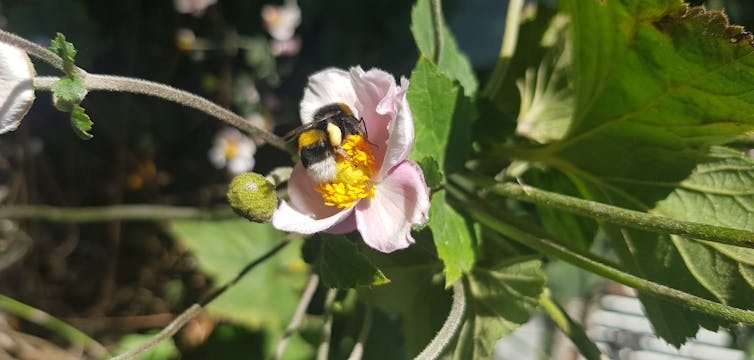
The intense colours of flowers have inspired us for centuries. They are celebrated through poems and songs praising the red of roses and blue of violets, and have inspired iconic pieces of art such as Vincent Van Gogh’s sunflowers.

But flowers did not evolve their colour for our pleasure. They did so to attract pollinators. Therefore, to understand why flowers produce such vibrant colours, we have to consider how pollinators such as bees perceive colour.
When observed under a powerful microscope, most flower petals show a textured surface made up of crests or “bumps”. Our research, published in the Journal of Pollination Ecology, shows that these structures have frequently evolved to interact with light, to enhance the colour produced by the pigments under the textured surface.

Sunshiney Daze
Bees such as honeybees and bumblebees can perceive flower colours that are invisible to us — such as those produced by reflected ultraviolet radiation.
Plants must invest in producing reliable and noticeable colours to stand out among other plant species. Flowers that do this have a better chance of being visited by bees and pollinating successfully.
However, one problem with flower colours is sunlight may directly reflect off a petal’s surface. This can potentially reduce the quality of the pigment colour, depending on the viewing angle.
You may have experienced this when looking at a smooth coloured surface on a sunny day, where the intensity of the colour is affected by the direction of light striking the surface. We can solve this problem by changing our viewing position, or by taking the object to a more suitable place. Bees, on the other hand, have to view flowers in the place they bloom.
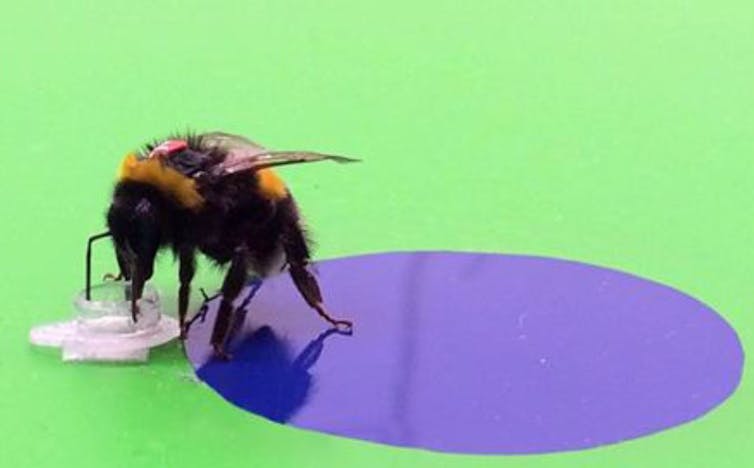
We were interested in whether this visual problem also existed for bees, and if plants have evolved special tricks to help bees find them more easily.
Read more: Our 'bee-eye camera' helps us support bees, grow food and protect the environment
How Bees Use Flower Surfaces
It has been known for some time that flowering plants most often have conical-shaped cell structures within the texture of their petal surfaces, and that flat petal surfaces are relatively rare. A single plant gene can manipulate whether a flower has conical-shaped cells within the surface of a petal — but the reason why this evolved has remained unclear.
Past research suggested the conical petal surface acted as a signal to attract pollinators. But experiments with bees have shown this isn’t the case. Other explanations relate to hydrophobicity (the ability to repel water). But again, experiments have revealed this can’t be the only reason.
We investigated how bumblebees use flower surfaces with or without conical petal shapes. Bees are a useful animal for research as they can be trained to collect a reward, and tested to see how they perceive their environment.
Bumblebees can also be housed and tested indoors, where it is easier to precisely mimic a complex flower environment as it might work in nature.
Flowers Cater To A Bee’s Needs
Our colleague in Germany, Saskia Wilmsen, first measured the petal surfaces of a large number of plants and identified the most common conical surfaces.
She then selected some relatively smooth petal or leaf surfaces reflecting light from an artificial source as a comparison. Finally, blue casts were made from these samples, and subsequently displayed to free-flying bees.
In the experiment, conducted with bumblebees in Germany, a sugar solution reward could be collected by bees flying to any of the artificial flowers. They had to choose between flying either towards “sunlight” — which could result in light reflections affecting the flower’s coloration — or with the light source behind the bee.
The experiment found when light came from behind the bees, there was no preference for flower type. But for bees flying towards the light, there was a significant preference for choosing the flower with a more “bumpy” conical surface. This bumpy surface served to diffuse the incoming light, improving the colour signal of the flower.
The results indicate flowers most likely evolved bumpy surfaces to minimise light reflections, and maintain the colour saturation and intensity needed to entice pollinators. Humans are probably just lucky beneficiaries of this solution biology has evolved. We also get to see intense flower colours. And for that, we have pollinators to thank.
Read more: Plants use advertising-like strategies to attract bees with colour and scent ![]()
Adrian Dyer, Associate Professor, RMIT University and Jair Garcia, Research fellow, RMIT University
This article is republished from The Conversation under a Creative Commons license. Read the original article.
Is the truth out there? How the Harvard-based Galileo Project will search the skies for alien technology
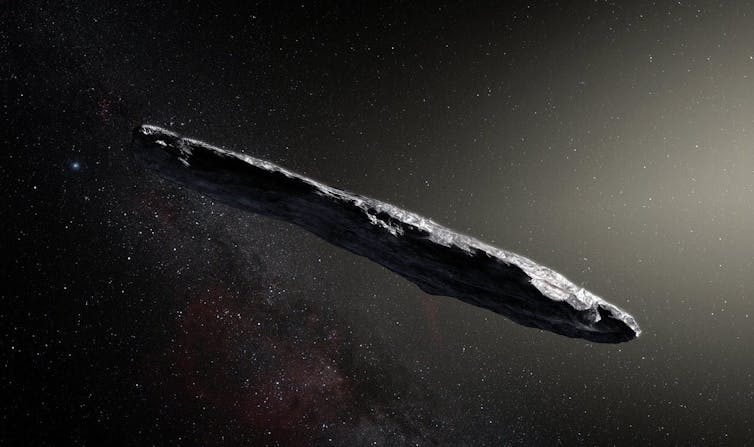
Can we find alien technology? That is the ambitious goal of the Galileo Project, launched this week by Harvard astrophysicist Avi Loeb with substantial private financial backing.
The project is far from the first attempt to detect signs of civilisations beyond Earth. Loeb has been criticised in the past for his dismissive approach to previous efforts to find extraterrestrial life and his argument that an alien artefact passed through our solar system in 2017.
So why do Loeb and his collaborators think they have a chance of finding something where others have failed? There are three triggers that suggest they might.
Exoplanets, ‘Oumuamua, And UFOs
First, years of painstaking observations have shown that many stars host Earth-like planets. There is a real chance these “exoplanets” might be home to alien civilisations.
Second, five years ago, an interstellar visitor, dubbed 'Oumuamua, tumbled though our solar system. It was a skinny object about 400 metres long, and we know from its speed and trajectory that it arrived from outside our solar system. It was the first time we had ever seen an interstellar object enter our neighbourhood.
Unfortunately it caught us on the hop, and we didn’t notice it until it was on its way out. So we didn’t get a chance to have a really good look at it.
Read more: No sign of alien life 'so far' on the mystery visitor from space, but we're still looking
Scientists were divided on the question of what 'Oumuamua might be. Many thought it was simply an interstellar shard of rock, even though we had no idea how such a shard might be produced or slung our way.
Others, including Loeb, thought there was a chance it was a spacecraft from another civilisation. Some scientists felt such claims to be far-fetched. Others pointed out that science should be open-minded and, in the absence of a good explanation, we should examine all plausible solutions.
Today, the question is still hanging. We don’t know whether 'Oumuamua was a spaceship or merely an inert lump of rock.
The third trigger for the Galileo Project came from the US military. In June, the Office of the US Director of National Intelligence announced that some military reports of UFOs, or UAPs (Unidentified Aerial Phenomena) as they are now known, seem real.
Specifically, the report said some UAPs “probably do represent physical objects given that a majority of UAP were registered across multiple sensors” and there was no known explanation for them.
In other words, they aren’t meteorological phenomena, or faulty instruments, or weather balloons, or clandestine military experiments. So what are they?
Again, the question is left hanging. The report seems to rule out known technology, and suggests “advanced technology”, but stops short of suggesting it is the work of aliens.
Science To The Rescue
Loeb takes the view that instead of debating whether either 'Oumuamua or UAPs provide evidence of alien intelligence, we should do what scientists are good at: get some reliable data. And, he argues, scientists are the people to do it, not politicians or military staff. As the US report says, the sensors used by the military “are not generally suited for identifying UAP”.
Few subjects divide scientists as much as the existence of aliens. On one hand, there are serious SETI (Search for Extra-terrestrial Intelligence) projects, such as Project Phoenix and Breakthrough Listen, that use the world’s largest telescopes to search for signals from some extraterrestrial intelligence.
At the other extreme, few scientists are persuaded by the fuzzy photos and dubious eyewitness accounts that seem to characterise many UFO reports.
The Galileo Project is very different from SETI searches or collections of UFO sightings. Instead, it will explicitly search for evidence of alien artefacts, either in space or on Earth.
But Is It Science?
Is this science? Loeb is convinced that it is. He argues the Galileo Project will bring scientific techniques and expertise to bear on one of the most important questions we can ask: are we alone? And the project will build purpose-designed equipment, optimised for the detection of alien artefacts.
Will it find anything? The odds are poor, as Loeb admits. In essence it’s a fishing expedition. But if there is a prima facie case for the existence of alien technology, then science has a duty to investigate it.
But suppose they do find something? Will we get to hear about it, or will it be locked up in some future Area 51?
The Galileo Project has promised all data will be made public, and all results will be published in peer-reviewed journals. Indeed, one of the reasons it will not use existing military data is because much of it is classified, which would restrict the project’s freedom to make the results public.
Or perhaps the project will find natural explanations for 'Oumuamua and UAPs. But even that will be a new scientific discovery, perhaps revealing new natural phenomena.
As Loeb says:
Whenever we look at the sky in a new way, we find something new. We will find something exciting no matter what.
Ray Norris, Professor, School of Science, Western Sydney University
This article is republished from The Conversation under a Creative Commons license. Read the original article.
The forgotten Australian veterans who opposed National Service and the Vietnam War
Jon Piccini, Australian Catholic UniversityOn July 26 1971, a top secret cabinet meeting ended what was then Australia’s longest conflict. The public would hear about it for the first time in August, when Prime Minister William McMahon announced the withdrawal of Australian forces from Vietnam.
Eighteen months — and a change of government later — Australia’s Vietnam War was over. Alongside untold Vietnamese, some 521 Australians had died in conflict, including 202 national servicemen.
The end of Australia’s war also saw the wrapping up of a novel and now largely forgotten organisation. The Ex-Services Human Rights Association of Australia was founded in October 1966 by former servicemen and women who “oppose militarism” and “believe that National Service […] should not involve conscription for foreign wars”.
The final issue of the group’s newsletter, Conscience, in February 1972 paid special tribute to Martin Leslie (Les) Waddington, a World War II veteran and leather goods manufacturer, and the group’s “spiritual leader, and greatest workhorse”.
Fifty years since Australia officially began withdrawing from Vietnam, my forthcoming article reflects on how Waddington exemplified an undercurrent of anti-war citizen soldiery in Australia.
Australia’s Anti-Militarist Tradition
The Ex-Services Human Rights Association of Australia emerged out of a long Australian tradition of opposition to compulsory national service, perhaps best exemplified in the famous struggle against conscription during the first world war.
Pre-war national service schemes had proven unpopular: 27,000 court cases were filed against non-compliers between 1912 and 1914.
During the war, two plebecistes defeated Prime Minister Billy Hughes’ attempts to conscript Australians for overseas service.
Read more: It's time Australia's conscientious objectors of WW1 were remembered, too
This subversive legacy continued. Ex-serviceman and communist Len Fox used a 1936 pamphlet, The Truth About Anzac, to suggest:
[the] heroism of the Conscientious Objector, the Militant Anti-War Fighter, and the Anti-Conscriptionist, [be] give[n] its place besides the heroism of the Anzacs.
While the Menzies government’s National Service scheme of 1964 was initially widely supported as citizen building, the return of “Nashos” in body bags saw the tide of public opinion slowly turn.
From Sydney To A National Movement
The Returned and Services League was established in 1916, and by the 1960s the “political pressure group” used its authority to support anti-communism, national service and the Vietnam war.
Waddington was still an active member of his local Cronulla RSL sub-branch when he spearheaded the Ex-Services Human Rights Association of Australia’s founding meeting in 1966.
Attended by both current and former RSL members, and including doctors, academics and “leading lay churchmen”, the Australia reported the 60 attendees were “well-tailored, well-fed and, to all appearances, essentially middle class”.
The Sydney-based group began actively participating in the city’s anti-war movement, including the December 1966 protests against visiting US President Lyndon B Johnson.

Waddington believed the Anzac tradition should venerate war resisters as much as battlefield sacrifice. These beliefs saw him expelled by the RSL’s State Executive in late May 1967 for “conduct subversive to the objects and policy of the League”.
The resulting controversy meant “there must be hardly anyone left in this country who has not now heard of our Association”, Waddington happily reported in Conscience. Membership exploded to over 500, with branches across the country.
Fellow RSL members came forward to defend Waddington. One resigned his membership, writing the league displayed “a hardening, intolerant attitude”, while another accused it of “deprivi[ing] members of the right to […] express political opinions”.
An editorial in the Canberra Times stated if the Vietnam war was “the be-all and end-all” of RSL policies, then “there would be great gaps in the ranks”.
Anzac And The Heroic Resister
Amid the outcry, Waddington was reinstated — but changing the RSL was not the Ex-Services Human Rights Association of Australia’s main priority. Its primary interest was supporting conscientious objectors.
The number of young Australians who refused to serve in Vietnam, while always small, rose quickly after the widely publicised case of Sydney school teacher Bill White in late 1966. The association took on his case, as it did other non-compliers like John Zarb.

What the association had — and the wider anti-war movement lacked — was their status as ex-servicepeople. Members wore service medals conspicuously at demonstrations to undermine the image of protesters as “long haired radicals”.
To refuse service was not an act of cowardice, the association claimed, but rather the highest form of bravery. As Waddington, protesting the ongoing imprisonment of objectors, remarked in a 1971 letter:
Two years in jail is the price for national heroes to pay to avoid murdering on a foreign field.
Waddington and his fellow anti-war veterans were convinced it was as brave to face prison for your beliefs as it was to face death on the battlefield.
This example highlights how, contrary to popular opinion, the ex-service community has always been far from monolithic in its politics. Equally, it shows Anzac is not an uncontestable mantra, but a pliable tradition that could, rhetorically at least, include proud soldiers and brave resisters.
Today, Australia reflects on the withdrawal from Vietnam as we face the aftershocks of another overseas war. Perhaps we should also reflect on those war resisters and their allies who believed, as the Ex-Services Human Rights Association of Australia put it, “war is a crime against humanity”.
Read more: Anzac Day is also about the right to democratic dissent and those who fought for it ![]()
Jon Piccini, Lecturer, Australian Catholic University
This article is republished from The Conversation under a Creative Commons license. Read the original article.
Record Infrastructure Funding And Aged Care Boost
Innovative Researchers Encouraged To Find Breakthroughs In Dementia
Harmful Body Fat Not Only Increases Your Waistline But Also Your Risk Of Dementia
- ‘unfavourable’ – people who tend to have fat around their lower torso and abdominal area, including around their These people have a higher risk of type 2 diabetes and heart diseases.
- ‘favourable’ – people who have have wider hips but a lower risk of type 2 diabetes and heart diseases.
- ‘neutral’ – people who have relatively low or very low risk of the cardiometabolic diseases.
Friday essay: how ‘Afghan’ coats left Kabul for the fashion world and became a hippie must-have
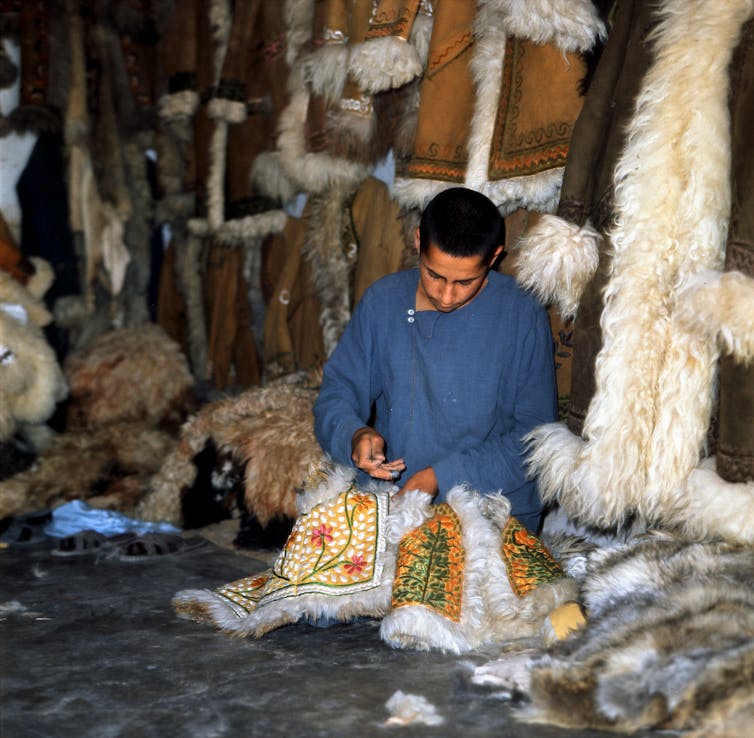
The London launch of Sgt. Pepper’s Lonely Hearts Club Band in May 1967 was a musical and fashion landmark. While the clothes worn by all four Beatles startled the journalists and disc jockeys, John Lennon stole the show. He wore a green, frilly, flowered shirt, maroon corduroy trousers, canary-yellow socks, corduroy shoes with two particularly unusual additions. One was a leather sporran, the other an Afghan sheepskin coat, worn with the fur inside and the skin outside, which was tanned yellow and embroidered with big red flowers down its front and sleeves.

These coats became a craze with extraordinary longevity. “Afghans”, as they were often called, were worn by many celebrities through the late 1960s. Then, for the best part of a decade, they became standard youth clothing — an archetypal hippie garment and emblem of the counterculture.
They had a resurgence inspired by Penny Lane’s character in the 2000 film Almost Famous and remain a favourite among lovers of bohemian fashion on Instagram.
Their embrace internationally transformed where and how the coats were made and what they looked like. Yet the craze for these coats could only happen because Afghanistan’s relationship with the rest of the world was changing.
Read more: The politics of the necktie — 'colonial noose', masculine marker or silk status symbol?
Short, Medium Or Very Long
Afghan coats traditionally came in three forms — sleeveless or short-sleeved hip-length vests known as pustinchas; knee-length, long-sleeved coats known as pustakis; and ankle-length cloaks called pustins.
In a gendered division of labour, men cured the skins, tanned them yellow with the rinds of pomegranates, cut them into pieces and sewed them together, while women and girls embroidered them with geometric and floral designs, usually in red or yellow. Their skins were occasionally bear, fox or goat, but usually karakul (a long-haired breed of sheep).
Although often written about as if only men wore them, women did too, and they were such ubiquitous winter-wear they were considered Afghan national dress.

The poor could typically afford only the smaller pustinchas or pustakis. If they bought the bigger pustins, these coats were usually plain which made them cheaper.
Senior government officials, successful merchants and wealthy clerics bought lavishly decorated pustins that demonstrated their status. In 1946, Maynard Owen Williams — the National Geographic Society’s first field correspondent — considered the pustin to be “the ultimate in masculine chic”. The archetypal Afghan man, he wrote, was “clad in red-embroidered sheepskin”.
Their prime source was Ghazni, south of Kabul. In 1955 British archaeologist Sylvia Matheson found “one shop after another offering nothing but pustin” there.
While entranced by those with white fur, Matheson rejected them as impracticable for her fieldwork that winter. Instead, she opted for a brown-furred pustincha that was still “enchanting, the yellow skin entirely covered in closely stitched flowers of pillar-box red, with here and there a spot of periwinkle blue”.
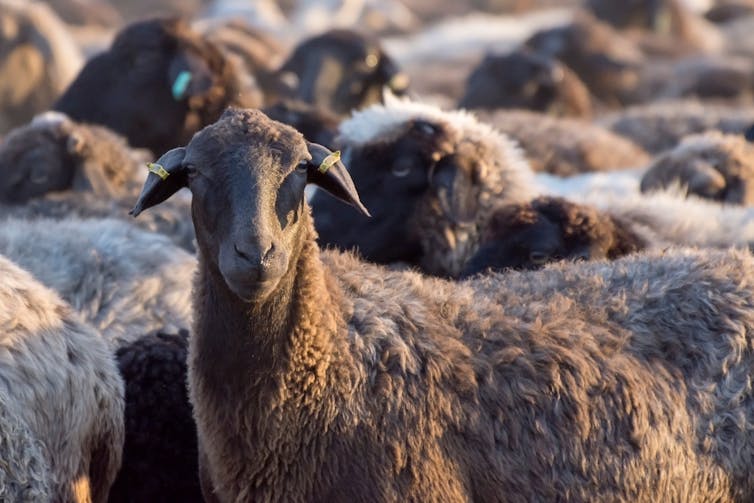
Read more: Friday essay: mom jeans and nostalgia in a time of uncertainty
Hippie Commerce
Many more foreigners visited from the early 1960s as Afghanistan embarked on a program of modernisation which saw significant numbers of women in the country’s cities unveil and find new forms of paid work.
A small number of westerners, typically older, arrived by plane, with lots to spend, prompting the Afghan government to build Kabul’s first five-star hotel.
In 1969 it opened, under lease to the Intercontinental Group, with rooftop dining and dancing facilities, a cocktail lounge, brasserie coffee shop, tennis courts and swimming pool. Most western visitors were hippies who, as English poet J. C. E. Bowen put it, travelled overland “in every imaginable kind of clapped-out motor vehicle […] through the bottleneck of Kabul on their way towards the imagined Elysium of Kathmandu”.
Their prime destination was Chicken Street in the Shahr-e Naw, a garden suburb close to the city centre, which was the most westernised part of Kabul. Once a domain of poultry vendors, Chicken Street became a tourist strip lined with antique shops, clothing, embroidery and jewellery stores, and carpet dealers. In Across Asia on the Cheap, the first Lonely Planet guide, published in 1973, Tony Wheeler described Chicken Street as “the freak centre of Kabul”.

Hippie capitalism became commonplace. As some travelled, they looked for local products to sell back home in the West and, if they made a good profit, imported more.
Richard Neville, the Australian of Oz Magazine fame, who bought a pustincha for himself while travelling overland from Sydney to London in 1965, encouraged this commerce.
In Play Power, his 1970 manifesto and manual for hippies, Neville recognised the larger exchange of dress occurring in Afghanistan and other countries on the Hippie Trail. He advised:
Sell your western-styled jeans in Nepal, and your long leather boots in Morocco. Once you could make 500% profit bringing back sheepskin jackets from Kabul, and you can triple your money with antique robes.

Read more: With energy, ideas and cheek to spare, Richard Neville was the boy of OZ
Rock ‘N’ Roll
Craig Sams, a young American who also travelled through Kabul in 1965 before settling in London, became a supplier.
His prime outlet was Granny Takes a Trip — London’s weirdest, most extreme, most exotic, hippest boutique — on the King’s Road in Chelsea, which soon eclipsed Carnaby Street as London’s fashion centre. At first, Granny Takes a Trip sold Victorian clothes, often modified to create a slightly modern feel. By 1967, when it began stocking pustinchas, its range included Charleston dresses of the 1920s, Victorian bustles from the 1880s, Boer War helmets, African fezes, Arab headdresses and Chicago gangster suits from the prohibition era.
The pustinchas were bought by men and women as Granny Takes a Trip was one of the first boutiques not to differentiate male from female dress. But it was men, particularly rock and pop stars, who brought Afghan jackets and coats to public attention.
Jimi Hendrix wore his orange-red, brocaded, sleeveless pustincha over an iridescent purple shirt with huge flared sleeves in one of the first all-star rock events in England, at the Kensington Olympia in London. Syd Barrett of Pink Floyd and Pete Townshend of The Who also wore them on stage. Eric Burdon, of House of the Rising Sun fame, got married in his.
All four Beatles wore pustinchas inside-out in their film of the Magical Mystery Tour and on the album’s cover. When the Beatles tried their hand at retail, their Apple Boutique had shelves of them. From across the Atlantic, it appeared to Life in 1968 that pustinchas had been “launched last season in England by the Beatles and their followers”.
Read more: Friday essay: why traditional Persian music should be known to the world
Global Appeal
Abracadabra, Manhattan’s first psychedelic boutique, soon followed. Its interior was lit by fluorescent tubes set on a flicker-flash sequence, which had particular impact since Abracadabra was filled with mirrors like a penny arcade. Its shop window featured a motorised hanger that made the clothes on it “rock ’n’ roll”.
When one hippie traveller returned from Afghanistan with five pustinchas at the start of 1968, Ira Seret of Abracadabra put them in its window where they were spotted by designer Anne Klein, who had just made leather fashionable for the New York outfitter Mallory’s. When Klein asked Seret to secure more and his original provider failed to deliver, Seret went to Afghanistan himself.
That summer and autumn, pustinchas were in Bloomingdale’s and Macy’s and all the glossies. Vogue reported that Afghan “coats and weskits beautifully embroidered in silk floss colours” were being “shovelled out the door” by Limbo, a boutique in New York’s East Village. Life magazine featured pustinchas sent by Ira Seret to Mallory’s, worn by five female models “over bright silk jump suits and slung about with yards of Mideast jewellery”. Harper’s Bazaar devoted two pages to Mallory’s embroidered and braided vests, again presented as womenswear.
Peak Pustinchas
The coats were cheap compared to most fashionable western clothes, even after Afghan makers more than doubled their prices in response to international demand. The one complaint was that they smelled foul when wet, due to a skin curing process more akin to pickling than tanning. This lead to Kabul’s first drycleaners to offer “exclusive no-smell treatments”.
By 1969, many more pustinchas were being worn outside Afghanistan than within it, as they maintained their appeal with the most beautiful people and became part of youth’s uniform.

The enduring audience for the pustincha was, however, downmarket — their iconic status confirmed in 1971 by artist Ronald Searle in a cover drawing for the New Yorker of a long-haired, bearded, barefoot hippie with flared trousers, shoulderbag, headband and pustincha.
Their international embrace fuelled new enthusiasm for Afghan clothing among some of Kabul’s elite who accepted that women should unveil but wanted Afghans to fight against foreign influences and keep Afghan customs alive.
Kabul also replaced Ghazni as the Afghan centre of pustincha production.
In 1968, the biggest sweatshop employed 30 workers. In 1970, when demand surged not only in the United States and Europe but also, for the first time, in Japan, one company employed 160 embroiderers who completed 30 to 40 coats each day. Another company built a hostel for its 250–300 embroiderers, primarily widows and young women from the provinces where there were many skilled needleworkers.
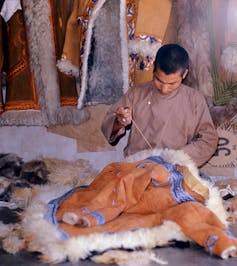
As these coats spread round the world, they fuelled awareness of Afghanistan, even if not quite as much as one Kabuli dealer boasted to the New York Times “Before no one remembered Afghanistan,” he said. “Now everybody remembers.”
This essay is an extract from Two Afternoons in the Kabul Stadium: A History of Afghanistan Through Clothes, Carpets and the Camera, to be published August 3 by Text Publishing.![]()
Tim Bonyhady, Emeritus professor, Australian National University
This article is republished from The Conversation under a Creative Commons license. Read the original article.
Study Shows Why Beer Mats Do Not Make Good Frisbees: A Very Important Discovery!
Coral Bell: the ‘accidental academic’ who wanted to stop armageddon

This piece is part of a new series in collaboration with the ABC’s Saturday Extra program. Each week, the show will have a “who am I” quiz for listeners about influential figures who helped shape the 20th century, and we will publish profiles for each one. You can read the other pieces in the series here.
When Australian international relations scholar Coral Bell died in 2012, former US Secretary of State Henry Kissinger said “no other commentator” had been as perceptive on United States policies.
Three years later, the Australian National University named its school of Asia-Pacific affairs after Bell, with former foreign minister Julie Bishop describing her as
one of the great international relations scholars of Australia and the world […] highly respected by policy makers nationally and internationally.
Clearly she was a superstar in her field. But why, outside specialists, should Bell be remembered and celebrated?
An Academic Who Thought About The Real World
Bell has been called an “accidental academic”.
She began her career as as a diplomat in 1945, and was in the room when the ANZUS Treaty was signed. But her time in the Department of External Affairs ended after she refused to join a Soviet spy ring — as ANU colleague Desmond Ball sensationally revealed after her death.
However, this early experience of government and diplomacy set her up well for a life of scholarship. Former head of the ANU Bell School Michael Wesley thinks her diplomatic role had a lasting impact on her work, which
always showed the practitioner’s sensitivity to the often galling realities of policy-making.
She believed the behaviour of leaders and diplomats mattered in foreign affairs, leading her to be variously described as a “classical realist”, “optimistic realist” and “realist optimist”.
She Focused On The Big Issues And The Big Picture
Bell’s work focused on power politics, the Cold War, diplomacy, defence and foreign policy. The titles of her extensive publications give a sense of the questions she wanted to answer: “politics of power”, “diplomacy of detente”, “conventions of crisis” and “living with giants”.

She acknowledged it was difficult to show direct causal connection between academic analyses and the choices of decision makers — but saw herself as influencing the climate of opinion within which policy-makers operate, and in turn helping shape countries’ behaviour.
Because of her historical knowledge and focus on big trends — demographic, economic, technological and political – she had an uncanny knack of previewing debates and controversies. Her 2007 forecast that Western domination of global politics was drawing to a close has held up well.
She Left An Intellectual Legacy
Bell also had an important influence on the growing discipline of international relations.
Concepts she created in the 1960s are still being used in the context of US-China rivalry. This includes the “shadow condiminium” — or temporary power-sharing arrangements between two dominant powers. Her work Dependent Ally also remains relevant to Australia-US relations, including its discussion of independence within an alliance.
Read more: Diplomacy and defence remain a boys' club, but women are making inroads
More broadly, she influenced later scholars with her focus on careful factual research, beginning with the evidence, rather than abstract theories. Griffith University’s Ian Hall describes this as an interpretive approach, which forefronts the beliefs of policy-actors and the thoughts shaping those beliefs.
Based on history, law and political philosophy rather than quantitative methods, this has arguably become a distinctive feature of Australian international affairs scholarship.
She Was A Woman In A Profession Dominated By Men
Born in 1923, Bell’s gender was always going to be a factor. When she entered the foreign service she was paid less for the same work and faced the marriage bar. As she recalled:
In my day you were told that if you married you were deemed to have resigned from the diplomatic service. So I gave up the idea.
Bell chose the life of the mind and excelled at it, showing gender was not a bar to being a leading authority.
As security studies academic Sheryn Lee explains, Bell’s success made it easier for other women to forge careers in the field of international relations.
she was a woman who was a leading authority […] and who forged a path for others through her practice and scholarship.
An Australian In A Field Dominated By Overseas Scholars
Australian scholars with Bell’s international impact have been rare in international relations. Her intellectual contributions enhanced Australia’s standing in policy and academic communities in the US and United Kingdom.
As Minh Bui Jones memorably observedof Bell:
For the rest of the world, she brought an antipodean temperament and perspective to the great questions of our time; she was our George Kennan in thick glasses, blue floral dress, white sneakers and a string of pearls.
A significant portion of her career was spent advancing the study of Australian foreign and defence policy and she spoke up for bringing an Australian approach to questions of international security.
She Focused On Issues Of Human Survival
Bell described herself as having a “preoccupation with armageddon”, especially how to avoid it. She saw her vocation as the “preservation of human life and human society”.
Coming to adulthood during the second world war, she knew what was at stake when great powers went to war. All her life, she remembered the pattern of the rug she was standing on when she heard an atomic bomb had destroyed Hiroshima.
In our time, the nuclear threat continues, along with existential threats of climate change, uncontrolled artificial intelligence and pandemics. In the face of such challenges, how countries interact becomes a question of survival of the species. That’s something worth dedicating a career to.
Bell lives on in her ideas and in the minds of those she has influenced. If you’d like to hear her voice, you can listen to her in 2008, speaking to Geraldine Doogue.![]()
Melissa Conley Tyler, Research Associate, Asia Institute, The University of Melbourne
This article is republished from The Conversation under a Creative Commons license. Read the original article.
Australia shouldn’t ‘open up’ before we vaccinate at least 80% of the population. Here’s why

Earlier this month National Cabinet released a four-phase COVID response plan. It wasn’t so much a plan – it had no dates and no thresholds – but more a back-of-the-napkin thought bubble. It was sensible, but vague.
National Cabinet now faces the hard task of converting vagueness into a real plan. To do this it must answer the question: what proportion of the Australian population needs to be vaccinated before we can open our international borders?
This means allowing stranded Australians to return, letting footloose people travel overseas, and welcoming international tourists and students again.
Read more: Australia has a new four-phase plan for a return to normality. Here's what we know so far
Well qualified experts differ on the requisite threshold for vaccination partly because there are so many unknowns, such as how quickly the Delta variant of COVID would spread through Australia if we open up, and how effective the different vaccines will prove to be in preventing transmission.
But new Grattan Institute modelling shows it would be dangerous for Australia to open up before at least 80% of the population is vaccinated.
Here’s what we found, and how we came to the 80% figure. Let’s start with the good news.
Vaccines Offer Substantial Protection
Both vaccines on offer in Australia – Pfizer and AstraZeneca – are effective at preventing infections from the Delta strain. Two doses of Pfizer offers about 88% protection against infection, while two doses of AstraZeneca offers about 67% protection.
Vaccinated people can still catch COVID, but those that do pass it on to about half as many others compared to the unvaccinated.
Read more: Yes, you can still get COVID after being vaccinated, but you're unlikely to get as sick
Evidence from the United Kingdom, Canada, and the European Union – areas with higher vaccination levels than Australia – also suggests both vaccines offer substantial protection against hospitalisation and death from COVID. A vaccinated person is about 95% less likely than an unvaccinated person to end up in hospital with COVID.
Now for the bad news.
The Delta Strain Is Far More Infectious
Researchers estimate the Delta variant is 50% to 100% more infectious than the Alpha variant, which itself was more transmissible than the variant that was dominant throughout 2020.
The effective reproduction number, or Reff, tells us how many people one infected person will spread the virus to, taking into account behaviour and public health measures in place designed to reduce transmission, such as masks and physical distancing.

If the Reff of the Delta variant in Australia is around 6 without vaccination, having 50% vaccination coverage will reduce the Reff to 3.
But the national goal must be to bring the Reff down to below 1, which would mean each person who was infected would infect less than one other person – and the virus would eventually peter out.
The higher the vaccination rate, the lower the effective reproduction number. Each person vaccinated offers a chance of breaking a chain of transmission that might lead to an outbreak.
Not only are vaccinated people less likely to become infected, they are also less likely to pass the virus onto others if they are.
The higher the vaccination rate, the lower the effective reproduction number
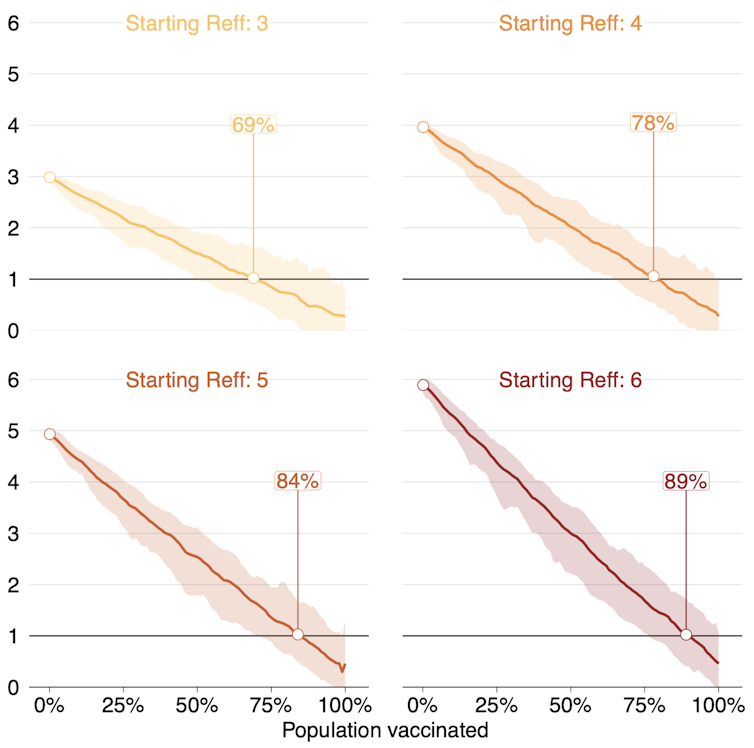
So Why Do We Need 80% Of People Vaccinated?
Grattan Institute’s model simulates the spread of COVID within a partially vaccinated population, and helps us peek into the future.
It uses age-based hospitalisation and intensive care unit (ICU) admission rates from more than a year of COVID data from Australian ICU units. It also assumes children under 16 are about one-fifth less likely to get COVID, and children over the age of two are able to be vaccinated.
In most of our simulations, older people have higher rates of vaccination, and no age group has more than 95% vaccine coverage.
Read more: When will we reach herd immunity? Here are 3 reasons that's a hard question to answer
We ran thousands of simulations of different vaccination rates, and different estimates of the Reff. The outcomes for 12 distinct scenarios are shown in the table below.
You can see why we recommend Australia not open up until at least 80% of the population is vaccinated – it is the only scenario where the virus is managed, with hospitalisations and deaths kept down to reasonable levels, even if the Reff is high.
Let’s Break It Down
Our simulations show that opening up at 50% vaccination rate (scenario 1) is a very bad idea, with many, many thousands of deaths.
Scenarios 2 and 3 are the optimist’s and gambler’s scenarios. If you are lucky and the Reff of Delta in Australia is 4 (with 70% vaccination rate) or 5 (with 75% vaccination rate), deaths and hospitalisations would not rise above moderate levels, and lockdowns could end and the borders could reopen.
But if you gambled on the wrong Reff, our hospitals would be overwhelmed and deaths would be unacceptably high. Opening the borders is a one-shot gamble: if you make the wrong call, the virus will quickly spread and all the good work and hard yards of living through lock-downs over the previous two years will have been wasted.
Public health decision-making is often risk averse, for the best of reasons. The difference in virus spread, hospitalisations and deaths between opening at 75% and at 80% are big, but the wait between the two thresholds may only be a month or two. This is why we recommend an 80% vaccination rate (scenario 4) as the threshold for opening up.
Even if the Reff of Delta is 6, our hospital system will not be overwhelmed, and deaths will not rise above the number of deaths in a moderate flu season, such as 2010, when there were 2,364 flu deaths.
Read more: 80% vaccination won't get us herd immunity, but it could mean safely opening international borders ![]()
Stephen Duckett, Director, Health Program, Grattan Institute and Will Mackey, Senior Associate, Grattan Institute
This article is republished from The Conversation under a Creative Commons license. Read the original article.
Chronic Pain Might Impact How The Brain Processes Emotions

Australian Bushfires, Not Pandemic Lockdowns, Had Biggest Impact On Global Climate In 2020
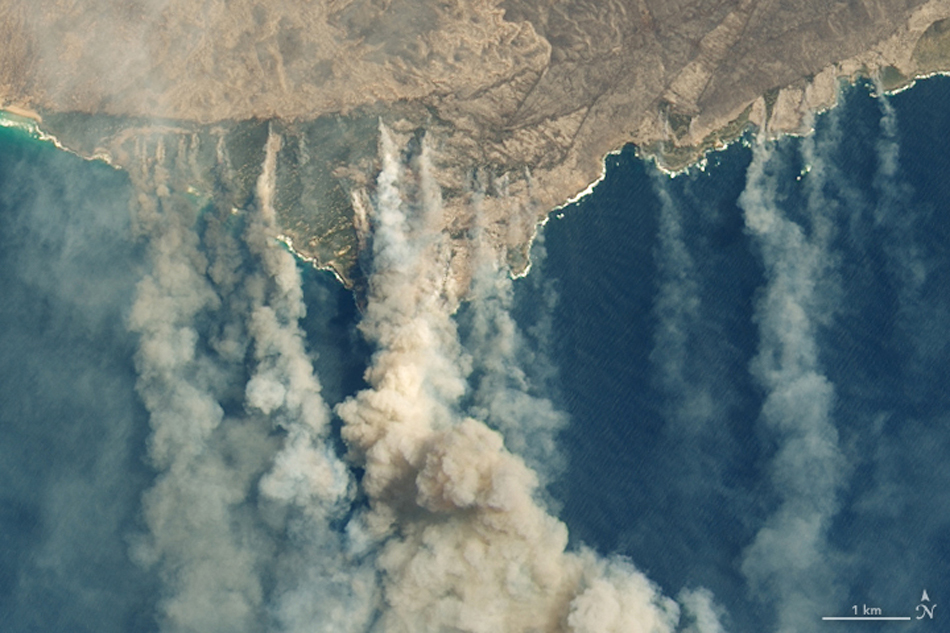
Excess Coffee: A Bitter Brew For Brain Health
A Naturally Inspired Reusable System That Purifies Water And Builds Itself
Cultural Biases Impact Native Fish
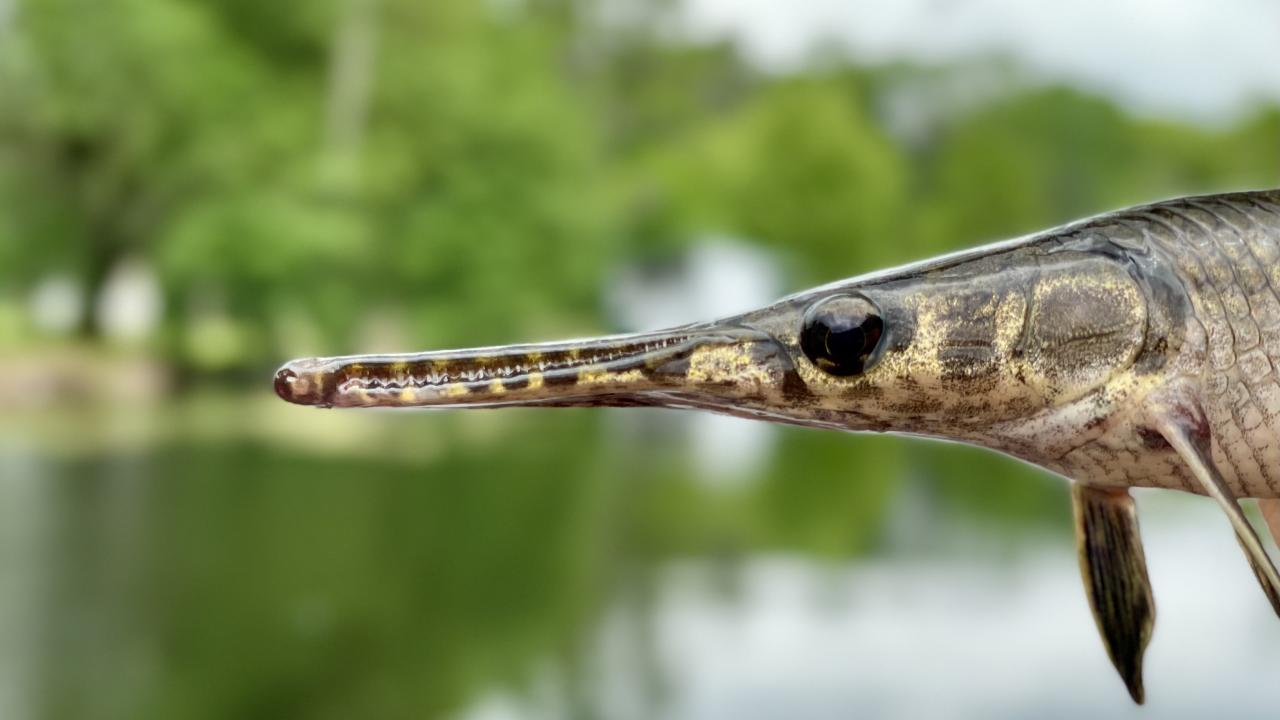
- Stop saying "rough fish." They suggest "native fish" as a simple alternative.
- Integrate Indigenous perspectives into fisheries management.
- Revisit species bag limits. Lower bag limits for native species until the science is conducted to confirm they could be higher. The study takes particular note of the fast-growing bowfishing market that has contributed to removing native species.
- Support science on native fishes. Game fish receive 11 times more research and management attention in American Fisheries Society journals than do "rough fish." To learn the true value of native fishes, more research is required.
- Co-manage species that have co-evolved, such as freshwater mussels and fish that host them.
- Correct misinformation and enhance science education through outreach and education for all ages.
Pedestrians Should Get The Green Light On Traffic Signal Prioritisation
Public protest or selfish ratbaggery? Why free speech doesn’t give you the right to endanger other people’s health
Hugh Breakey, Griffith UniversityThousands of demonstrators took to the streets in major Australian cities at the weekend, to protest the rolling lockdowns that have formed a central part of the government response to the COVID pandemic.
In some cases, the protests were illegal and in breach of lockdown orders. More seriously still, the protests in Sydney took place even as the Delta variant spreads ominously across New South Wales.
Commentators and political leaders called out the protesters, asserting they were “selfish boofheads” engaging in “ratbaggery”.
But what are the ethics of protesting lockdowns in a time of lockdowns? There are several issues to unpack: free speech, science denial, and the health threat the rallies pose to the public. And it’s the last of these three that presents significant ethical problems.
Why Should We Protect Protests?
There are three important arguments in favour of giving people the right to free speech, especially when it takes the form of protesting government policy.
First, free speech is a human right. Article 19 of the United Nations’ Universal Declaration of Human Rights proclaims the respect we are owed as humans includes being able to speak out and share our ideas with others.
Second, speaking out and protesting are important parts of living in a democracy. Just as we must all be allowed to vote, so too should we be free to come together in open and honest debate.
Third, as the philosopher and politician John Stuart Mill famously argued in On Liberty, if we don’t allow dissenting and unpopular views to be heard, we lose the opportunity to challenge and hone our own beliefs.
Read more: Is protesting during the pandemic an 'essential' right that should be protected?
Do Wacky And Unscientific Views Also Deserve Protection?
These three arguments are at their strongest when people are doing their best to think carefully and rationally. In fact, being “endowed with reason” is invoked in the very first article of the Universal Declaration, to support human freedom and dignity. As such, we arguably have a duty to think responsibly, alongside our right to speak freely.
So should views that seem to spurn rationality and scientific evidence be tolerated? There’s good reason to think the answer is still “yes”.
Even if we agree that science provides an extraordinary mechanism for unearthing truths about the world, scientists are still human beings, and their institutions remain vulnerable to mistake, bias, groupthink, corruption and (yes) even conspiracy. Indeed, scientific progress occurs precisely because its findings remain open to challenge, and are rigorously reviewed before they are published.
Read more: Coronavirus anti-vaxxers aren’t a huge threat yet. How do we keep it that way?
Moreover, public policy is never purely about science. Science can only tell us what is, not what we should do. Justifying lockdowns is also a matter of moral judgements about the importance of life and health, freedom and rights, livelihoods and fairness, and more. Reasonable people can disagree about these matters.
What About When Protest Is Harmful?
The above arguments imply we should be wary of outlawing political protest. But at the same time, they don’t imply speech can’t be limited to prevent harm.
The most ethically worrisome part of the protests in Melbourne and Sydney (apart from specific instances of violence, against both people and animals) was the danger they presented to the community.
By defying lockdown orders, and masking and social-distancing requirements, the marchers created an opportunity for community transmission of COVID. In Sydney, in particular, there is every chance some protesters were infectious with the virus.
Besides risking serious harm to others, further outbreaks might force the NSW government to extend the current lockdown — the polar opposite of what the protesters wanted.
Still, there may be cases in which harmful protests are justified. Many ethicists argued this was true of the Black Lives Matter protests in the United States in the wake of George Floyd’s murder, where the need to respond to racial injustice arguably outweighed the risks of spreading COVID.
Several commentators observed the conceptual whiplash when public health officials who had been decrying lockdown protests suddenly encouraged the Black Lives Matter marches.
Perhaps the difference simply comes down to some grievances being more genuine, informed, and socially important than others. But even if this rightly shapes how we morally judge the protesters in each case, it remains unsettling if official responses and arrests are based on how ethically worthy political leaders think protesters’ grievances are.
Harm, Belief, And The Rule Of Law
There is one key difference between the Black Lives Matter protests and Australia’s anti-lockdown protests that is worth considering. At least some of the anti-lockdown protesters seemed to behave as if they were entitled to decide what was or wasn’t harmful to the community at large, and to proceed on that basis. Many of the protesters evidently don’t believe the coronavirus is a serious danger, so they felt free not to worry about spreading it.
But this isn’t how democracy or the rule of law works. Citizens can’t act on their own opinions about the harms they are happy to inflict on others, precisely because we will all have different views on such matters. That’s why we need laws, and democratic processes to create them.
If that’s right, the problem isn’t just that protesters were “selfishly” putting their interests ahead of other people’s. The deeper concern is that they acted as if their beliefs could rightly determine the harms they were willing to visit on others. And that is a much more serious charge.
Hugh Breakey, President, Australian Association for Professional & Applied Ethics. Senior Research Fellow, Moral philosophy, Institute for Ethics, Governance & Law, Law Futures Centre., Griffith University
This article is republished from The Conversation under a Creative Commons license. Read the original article.
A wet winter, a soggy spring: what is the negative Indian Ocean Dipole, and why is it so important?

This month we’ve seen some crazy, devastating weather. Perth recorded its wettest July in decades, with 18 straight days of relentless rain. Overseas, parts of Europe and China have endured extensive flooding, with hundreds of lives lost and hundreds of thousands of people evacuated.
And last week, Australia’s Bureau of Meteorology officially declared there is a negative Indian Ocean Dipole — the first negative event in five years — known for bringing wet weather.
But what even is the Indian Ocean Dipole, and does it matter? Is it to blame for these events?
What Is The Indian Ocean Dipole?
The Indian Ocean Dipole, or IOD, is a natural climate phenomenon that influences rainfall patterns around the Indian Ocean, including Australia. It’s brought about by the interactions between the currents along the sea surface and atmospheric circulation.
It can be thought of as the Indian Ocean’s cousin of the better known El Niño and La Niña in the Pacific. Essentially, for most of Australia, El Niño brings dry weather, while La Niña brings wet weather. The IOD has the same impact through its positive and negative phases, respectively.
Positive IODs are associated with an increased chance for dry weather in southern and southeast Australia. The devastating Black Summer bushfires in 2019–20 were linked to an extreme positive IOD, as well as human-caused climate change which exacerbated these conditions.
Negative IODs tend to be less frequent and not as strong as positive IOD events, but can still bring severe climate conditions, such as heavy rainfall and flooding, to parts of Australia.

The IOD is determined by the differences in sea surface temperature on either side of the Indian Ocean.
During a negative phase, waters in the eastern Indian Ocean (near Indonesia) are warmer than normal, and the western Indian Ocean (near Africa) are cooler than normal.
Read more: Explainer: El Niño and La Niña
This causes more moisture-filled air to flow towards Australia, favouring wind pattern changes in a way that promotes more rainfall to southern parts of Australia. This includes parts of Western Australia, South Australia, Victoria, NSW and the ACT.
Generally, IOD events start in late autumn or winter, and can last until the end of spring — abruptly ending with the onset of the northern Australian monsoon.

Why Should We Care?
We probably have a wet few months ahead of us.
The negative IOD means the southern regions of Australia are likely to have a wet winter and spring. Indeed, the seasonal outlook indicates above average rainfall for much of the country in the next three months.
In southern Australia, a negative IOD also means we’re more likely to get cooler daytime temperatures and warmer nights. But just because we’re more likely to have a wetter few months doesn’t mean we necessarily will — every negative IOD event is different.

While the prospect of even more rain might dampen some spirits, there are reasons to be happy about this.
First of all, winter rainfall is typically good for farmers growing crops such as grain, and previous negative IOD years have come with record-breaking crop production.
In fact, negative IOD events are so important for Australia that their absence for prolonged periods has been blamed for historical multi-year droughts in the past century over southeast Australia.
Negative IOD years can also bring better snow seasons for Australians. However, the warming trend from human-caused climate change means this signal isn’t as clear as it was in the past.

It’s Not All Good News
This is the first official negative IOD event since 2016, a year that saw one of the strongest negative IOD events on record. It resulted in Australia’s second wettest winter on record and flooding in parts of NSW, Victoria, and South Australia.
The 2016 event was also linked to devastating drought in East Africa on the other side of the Indian Ocean, and heavy rainfall in Indonesia.
Thankfully, current forecasts indicate the negative IOD will be a little milder this time, so we hopefully won’t see any devastating events.

Is The Negative IOD Behind The Recent Wet Weather?
It’s too early to tell, but most likely not.
While Perth is experiencing one of its wettest Julys on record, the southwest WA region has historically been weakly influenced by negative IODs.
Negative IODs tend to be associated with moist air flow and lower atmospheric pressure further north and east than Perth, such as Geraldton to Port Hedland.
Outside of Australia, there has been extensive flooding in China and across Germany, Belgium, and The Netherlands.
It’s still early days and more research is needed, but these events look like they might be linked to the Northern Hemisphere’s atmospheric jet stream, rather than the negative IOD.
The jet stream is like a narrow river of strong winds high up in the atmosphere, formed when cool and hot air meet. Changes in this jet stream can lead to extreme weather.
What About Climate Change?
The IOD — as well as El Niño and La Niña — are natural climate phenomena, and have been occurring for thousands of years, before humans started burning fossil fuels. But that doesn’t mean climate change today isn’t having an effect on the IOD.
Read more: Why drought-busting rain depends on the tropical oceans
Scientific research is showing positive IODs — linked to drier conditions in eastern Australia — have become more common. And this is linked to human-caused climate change influencing ocean temperatures.
Climate models also suggest we may experience more positive IOD events in future, including increased chances of bushfires and drought in Australia, and fewer negative IOD events. This may mean we experience more droughts and less “drought-breaking” rains, but the jury’s still out.
When it comes to the recent, devastating floods overseas, scientists are still assessing how much of a role climate change played.
But in any case, we do know one thing for sure: rising global temperatures from climate change will cause more frequent and severe extreme events, including the short-duration heavy rainfalls associated with flooding, and heatwaves.
To avoid worse disasters in our future, we need to cut emissions drastically and urgently.
Nicky Wright, Research Fellow, University of Sydney; Andréa S. Taschetto, Associate Professor, UNSW, and Andrew King, ARC DECRA fellow, The University of Melbourne
This article is republished from The Conversation under a Creative Commons license. Read the original article.
Disclaimer: These articles are not intended to provide medical advice, diagnosis or treatment. Views expressed here do not necessarily reflect those of Pittwater Online News or its staff.